#carol newman icons
Text









Trailer Icons
The Santa Clauses (2022)
*Feel free to use, no credit is needed
#the santa clause icons#disney icons#the santa clause#the santa clauses#the santa clauses icons#bernard the elf#simon choksi#scott calvin#carol newman#carol calvin#carol newman icons#carol calvin icons#bernard the elf icons#scott calvin icons#simon choksi icons#betty the elf#betty the elf icons
92 notes
·
View notes
Video
HBO True Detective Season 3 Main Title Sequence from Patrick Clair on Vimeo.
What makes a man? His choices, his memories? Nic Pizzolatto's True Detective returns with Mahershala Ali forging an iconic character across three timelines.
Client: HBO
Antibody
Director: Patrick Clair
Creative Director: Raoul Marks
Managing Partner: Bridget Walsh
Executive Producer: Carol Salek
Mill+
Executive Producer: Elizabeth Newman
Producer: Moira Mahoney
Editor: Victor Jory
Lead Motion Designers: Woosung Kang & Kyle Moore
Design: Sasha Vinogradova
Animation: Justin Sucara
Colour: The Mill
Colourist: Matthew Osborne
Colour Producer: Liza Kerlin
Music Supervisor: T Bone Burnett
Music: "Death Letter" written by Son House, performed by Cassandra Wilson
0 notes
Photo

Madame Wu, famed Southern Califirnia restauranteur passed away at 106 years old on September 29th according to the Hollywood Reporter. Madame Sylvia Wu, whose iconic restaurant, Madame Wu’s Garden served Hollywood A-listers for decades! Taken from an article written for the Los Angeles Times by Christy Pina: “ When Wu, her husband and three kids moved from New York to Los Angeles, she was shocked to find inauthentic Cantonese dishes in that city. And she wanted to change that. So, she opened up her first restaurant in Santa Monica in 1959, once her children went off to boarding school and she had some free time on her hands.“ “Madame Wu’s Garden began in a small location and then upgraded to a much bigger site once it picked up steam. According to the Times, Wu drummed up business for her new restaurant by writing a letter to members of her church and asking one of her friends, who was a studio executive, to spread the word. It paid off.” “Wu’s restaurant quickly became known for it’s celebrity clientele, which included stars like Cary Grant, Mae West, Frank Sinatra, Elizabeth Taylor, Johnny Carson, Carol Burnett, Walter Matthau, Robert Redford, Paul Newman, Tom Cruise and Steven Spielberg , among others.” “She closed the restaurant in 1998 as hipper and more casual Chinese spots opened and tastes in the city shifted. At the time, she also spoke of wanting to spend more time with her grandchildren, but it didn’t take long for her to come out of retirement.” “ The restaurateur opened a new spot, Madam Wu’s Asian Bistro & Sushi, in the then-new Grove shortly after, but it didn’t last nearly as long as the first, though people still had affection for her.” “Wu is survived by her two sons George and Patrick and numerous grandchildren. Her husband died in 2011.” I bought this sign a few years ago which is displayed proudly in my store. I wanted to pay my respects today to a woman who was a visionary restauranteur. RIP…Madame Wu. #madamewusgarden #vintagesignage #vintagedecor #designer #decorator #setdesign #ressurectedoddities https://www.instagram.com/p/CjNqcNsu9QV/?igshid=NGJjMDIxMWI=
1 note
·
View note
Text

Today! Live @5 - Iconic musicians with history, and for the fun of it, I've got some history with some of them, as well. The Immediate Family, oft known as The Section, has played with pretty much every artist I've seen Live and played on most of the albums I've listened to throughout my life. Iconic barely begins to describe the legacy of Danny Kortchmar (Kootch), Leland Sklar, Waddy Wachtel, Russell Kunkel, and my 35+ yrs long friend, more recent addition, Steve Postell. Together now, front and center themselves, first with the music they created with, and for others, and now with new music and The Denny Tedesco documentary Immediate Family, winning festivals and soon to drop, they're doing what they love, loving it, in each other's great company. Happiness is...
The Immediate Family can be heard on albums from Jackson Browne, James Taylor, Linda Ronstadt, Stevie Nicks, Keith Richards, Warren Zevon, Graham Nash, Neil Young, David Crosby, and many, many, many more. Kortchmar, Sklar, and Kunkel have worked together since the early 70s and made up three-quarters of The Section, best known for both their studio and live work in support of some of the top-selling singer/songwriters and solo singers in the history of music, as well as their own acclaimed instrumental albums. (By the mid-70s, they were later joined by Wachtel). Collectively, these musicians helped define the sound of a generation. Talkin' 'but my generation.
Danny Kortchmar’s credits as guitarist, producer, songwriter, and session musician include work with James Taylor, Don Henley, Carole King, Linda Ronstadt, Jackson Browne, and Billy Joel, among many others. As a songwriter, Kortchmar has both written alone or collaborated with numerous artists, penning indelible tracks such as Don Henley’s “Dirty Laundry,” “All She Wants to Do Is Dance,” and “New York Minute,” as well as Jackson Browne’s “Somebody’s Baby” and “Shaky Town,” to name a few.
Legendary guitarist, producer, and songwriter Waddy Wachtel has worked with many of the same artists as Kortchmar, as well as artists like the Rolling Stones, Keith Richards, Stevie Nicks, Randy Newman, Bryan Ferry, and the late Warren Zevon, with whom he co-wrote and produced a number of hit songs including “Werewolves of London,” which The Immediate Family has included in their setlist. Wachtel’s production work includes Keith Richards, Bryan Ferry, George Thorogood, and The Church, and he has composed numerous scores for feature films.
Leland Sklar has performed in the studio and on tour with Phil Collins, James Taylor, Toto, and Billy Cobham, to name a few. Actually, Sklar has the most credits of any of the members of The Immediate Family, having worked on over 2,600 albums.
Russ Kunkel’s credits include Jackson Browne, James Taylor, Linda Ronstadt, Bob Dylan, Stevie Nicks, Lyle Lovett, and dozens more. He has created and co-produced film scores for Mike Nichols’ Heartburn, Joyce Chopra’s Smooth Talk, and New World Films’ Certain Fury. Production work includes Clannad, Jimmy Buffett, The Derek Trucks Band, Dan Fogelberg, Aaron Neville, and others.
Steve Postell is a seasoned touring and session player who has worked with David Crosby, Jennifer Warnes, Michael McDonald, John Oates, Robben Ford, and many others. He recorded and mixed the final 3 performances of Ravi Shankar, and has scored films including “Dying To Know” about Timothy Leary & Ram Dass and narrated by Robert Redford. He has released several solo records, including the critically acclaimed “Time Still Knockin’” on Immergent Records.
The Immediate Family’s new EP Live from Telefunken Soundstage is a six-song live recording captured at Telefunken’s Connecticut headquarters on November 14, 2021 during a stop in the group’s recent nationwide tour.
Visit The Immediate Family online:
Band home page: https://www.immediatefamilyband.com/
Facebook: https://www.facebook.com/TheImmedFamily
Twitter: https://twitter.com/TheImmedFamily
Instagram: https://www.instagram.com/theimmedfamily/
Immediate Family documentary Facebook page: https://www.facebook.com/immediatefamilyfilm/
For now, come for no doubt, lively, crazy conversation, and maybe some live impromptu music. CANNOT WAIT. I LOVE these boys!
#TheImmediateFamily#LelandSklar#RussKunkle#WaddyWachtel#DannyKortchmar#StevePostell#Filmmaker#Docs#Documentary#Music#TommyTedesco#TheSection#TheStones#StevieNicks#JacksonBrowne#JamesTaylor#LindaRonstadt#Musicians#GameChangersWithVickiAbelson#VickiAbelson#GameChangers#podcast#inspirationalpodcast#Celebrity#Success#Creativity#Manifesting#FacebookLive#Facebook#Talkshow
0 notes
Note
Movie ask #6 yo
6. Top five favorite soundtracks of your favorite movie composer: oh, dang. This doesn't speak super well of me bc the only composers I can think of 5 films for offhand are really obvious ones like John Williams (and I mean like, forget it. That is legit icon status right there. The first time I became cognizant of the power of something like a movie's musical theme was in Harry Potter which hurts my heart a bit but damn if Hedwig's theme doesn't just immediately take me to a time and place and memory.)
So instead, I'm gonna rework this question about 5 composers whose work I really love
1. Thomas Newman (Little Women, Fried Green Tomatoes, WALL-E)
2. Joe Hisaishi (Spirited Away, Howl's Moving Castle, Princess Mononoke)
3. James Horner (Jumanji, Titanic, The Mask of Zorro)
4. Carter Burwell (Carol, True Grit, A Goofy Movie)
5. Elmer Bernstein (Far From Heaven, The Black Cauldron, The Great Escape)
Hope you find something enjoyable there, my friend! Thanks for the movie ask :)
#the problem is now I've spent time answering this instead of writing whoops#but here we are#and now I have music I can look up and write to!#asks#thepriceisrizzoli
3 notes
·
View notes
Note
Are we talking current or are we including those from the past?
We’re talking about all of them!
Whew ok, this is gonna be a long list cause Hollywood did truly give us a bunch of iconic couples:
Old Hollywood: Katharine Hepburn and Spencer Tracy, William Holden and Audrey Hepburn, Ava Gardner and Frank Sinatra, Carole Lombard and Clark Gable, Bogie and Bacall, Richard Burton and Elizabeth Taylor, Joanne Woodward and Paul Newman, Marilyn Monroe and Joe DiMaggio, Olivia Hussey and Leonard Whiting
Couples of the past/broken up: Jack and Anjelica Houston, Winona and Johnny, Brad and Jen, Brad and Angie, Angie and Billy Bob, Edward Norton and Salma Hayek, RPatz and KStew, Vanessa Hudgens and Austin Butler, Rihanna and Drake (it is what it is), Lisa Bonet and Lenny Kravitz, Cameron Diaz and Mat Dillon, Jada and Tupac (they never officially dated but you know what I mean), Reese Witherspoon and Jake Gyllenhaal, Ari and Mac Miller (RIP), Alexa Chung and Alex Turner, Nina Dobrev and Ian Somerhalder, Emma Stone and Andrew Garfield, Courtney Cox and Michael Keaton, Heath Ledger (RIP) and Michelle Williams, Bowie (RIP) and Iman
Couples that are together currently: Jada and Will, Bennifer (again, it is what it is), Jordyn Woods and Karl Anthony-Townes, Tom Holland and Zendaya, Michelle and Barack Obama, Gabrielle Union and Dwayne Wade, Beyoncé and Jay-Z, Emily Blunt and John Krasinski, Mila and Ashton, Blake and Ryan, Kurt Russell and Goldie Hawn, Isla Fisher and Sacha Baron Cohen, Jhene Aiko and Big Sean, Joe Jonas and Sophie Turner, Sarah Paulson and Holland Taylor, Freddie prinze jr and Sarah Michelle Gellar, Saiorse Ronan and Jack Lowden
11 notes
·
View notes
Photo

31 Hollywood Icons Who Served in the U.S. Military
On this Memorial Day, millions of Americans across the country are honoring our military heroes, observing, and reflected on those who made the ultimate sacrifice. This list highlights some of the actors, directors, singers, producers, and entertainers who’ve served in the U.S. military.
From Hollywood’s earliest days, artists have served in the U.S. armed forces. Some had broader experiences than others in service to the country And many Hollywood greats served in World War II.
Jimmy Stewart
James Stewart not only joined the US Air Force in 1941, he ended his service in 1968 as a Brigadier General in the USAF Reserves. Stewart’s service was not for show, either. He flew many bombing missions over Germany and Nazi-occupied Europe.
Kirk Douglas
The famed movie tough guy joined the US Navy in 1941 and served as a communications officer in anti-submarine warfare. He received a medical discharge thanks to war injuries in 1944.
Clark Gable
Though he was already a veritable old man in soldier years, Gable joined the U.S. Army Air Corp at 43 and few five combat missions as an observer-gunner. Gable joined after his wife, Carol Lombard, died in a plane crash while flying home after a tour to promote war bonds.
Audie Murphy
Maj. Audie Murphy went into the Army as a private and won many battle field promotions. He is one of the most widely decorated actors in Hollywood history. He is the only actor/celebrity to be awarded the Congressional Medal Of Honor. In addition, he was awarded a Distinguished Service Cross, two Silver Stars, a Legion of Merit with Combat V, and two Bronze Stars with Combat V. He also received several foreign awards were especially impressive. He received the French Forrager, Legion of Honor, and Croix de Guerre with Palm and Silver Star, and the Belgian Croix de Guerre 1940 with Palm.
Other stars of the era who served include Jason Robards (Navy 1941), Paul Newman (Navy, 1943), and Mel Brooks (Army, 1944). Then there was singer and dancer Josephine Baker who was a secret collaborator with the French Resistance to the Nazi invaders and was even awarded the Croix de Guerre as a spy for her work to defeat the Nazis. Several others served in the forces of their native nations including David Niven (Royal Army), Sir Alec Guinness (Royal Navy), and Audrey Hepburn (Dutch Resistance), and Star TrekActor James Doohan (Royal Canadian Army). Doohan was part of the D-Day invasion forces, was wounded six times losing a finger in the process, and later joined the Canadian Air Force as a pilot.
Ronald Reagan
Our 40th president, Ronald Reagan, was already a star when he joined the war effort. He served in the Army Air Force during World War II, enlisting in the Army Enlisted Reserve on 29 April 1937 and ordered to active duty on April 19, 1942. Because of his eyesight, he was not assigned to an air crew and instead helped make over 400 training films for the Army Air Force.
Sidney Poitier
Sidney Poitier, the first black American to win an Academy Award, enlisted in the U.S. Army during World War II in November of 1943. He served as a physiotherapist for almost a year, even though he lied about his age, as he was only 16 when he joined.
B.B. King
B.B. King, one of the greatest blues guitarists, was inducted into the U.S. Army in 1944, but was quickly released back into civilian life following boot camp because the government deemed his original profession — a tractor-trailer driver — to be vital to the war economy.
Hugh Hefner
Later to be known as the swinger editor of Playboy Magazine, Hugh Hefner joined the U.S. Army in 1944 after graduating high school. Hef didn’t see any acton, though, and was discharged in 1946 after serving as an Amy newspaperman and infantry clerk.
Tony Bennett
Tony Bennett, the legendary “I Left My Heart in San Francisco” crooner, was drafted during World War II in 1944 and assigned to the 63rd Infantry Division, or “Blood and Fire” division, fighting in France and Germany. Being a “replacement” was not an easy job as the war was winding down in Europe. About half these soldiers died in the months after basic training in 1944 and the end of the war in Europe in Sept. of 1945.
After the big war, many others continued the tradition, of course.
Gene Hackman
The actor, who won an Academy Award for Best Actor in The French Connection, enlisted in the Marine Corps the year after World War Two ended in1946. He lied about his age to get accepted, as he was only 16 when he enlisted.
Willie Nelson
The Always On My Mind singer volunteered for the U.S. Army in 1950. However, he only served nine months and was given a medical discharge due to severe back problems.
Johnny Cash
Johnny “The Man In Black” Cash enlisted in the U.S. Air Force in 1950. After basic training at Lackland Air Force Base and technical training at Brooks Air Force Base, both in San Antonio, Texas, he was assigned to the 12th Radio Squadron Mobile of the U.S. Air Force Security Service at Landsberg, West Germany. He mustered out in 1954.
Clint Eastwood
Clint Eastwood was drafted in 1951 for service during the Korean War. Eastwood saw no action, though, and spent his service at Ft. Ord in California, where he was appointed as a lifeguard and projectionist of training films.
David Janssen
Perhaps best known as the man on the lam in the 60s TV series, The Fugitive, Janssen didn’t escape the U.S. Army having served from 1952 to 1954 at Fort Ord, California. He saw no action during the Korean War as he served in the entertainment division during his two-year stint.
Martin Milner
Like his army pals Clint Eastwood and David Janssen, Adam 12 star Martin Milner served a two-year stint in the Army and was based at Fort Ord, California. Also like his buddies Eastwood and Janssen, there he worked in the entertainment sector. He mustered out in 1954 and went right into TV and film work in Hollywood.
Robert Duvall
Robert Duvall enlisted in the U.S. Army after graduating from Principia College in 1953. Duvall has disputed early biographies that claimed he fought during the Korean War, though. He has joked that he “barely qualified” with his M-1 rifle in basic training. He served two years, and never got past the rank of private first class.
Leonard Nimoy
Later to become famous as Star Trek’s half human, half alien Mr Spock, Leonard Nimoy enlisted in the U.S. Army Reserve at Fort McPherson, Georgia. He served for 18 months between 1953 and 1955. Nimoy also worked in the Army’s Special Services narrating plays and performing in training films.
James Earl Jones
The voice of Star Wars villain Darth Vader, a man who has been referred to as “one of the greatest actors in American history,” served in the Army during the Korean War, rising to the rank of first lieutenant. Jones missed the war, though, as he started his service in 1953 just as the war was coming to a close.
Alan Alda
Best known for playing an Army surgeon in the TV series M.A.S.H., Alda did serve in the actual military when he volunteered after finishing his studies at Fordham University. He served as a gunnery officer during a six-month tour of duty in the Korean War.
Morgan Freeman
Morgan Freeman turned down a scholarship for acting and instead joined the Air Force in which he served from 1955 to 1959. He served as a radar technician and mustered out as an Airman 1st Class. Freeman has said that he enjoyed his service experience until, that is, he was being scouted to be trained as a jet pilot. He said the reality that war means killing dawned on him at that time and he began to look for the exit door to get back to life as an actor.
Elvis Presley
Elvis Presley’s drafting in 1957 was huge news and the media followed him throughout his years of service. Elvis honorably served his term and mustered out as a sergeant in 1960.
Chuck Norris
Famed martial artist Chuck Norris joined the U.S. Air Force in 1958 and served his full term, being discharged in 1962. He was ultimately assigned to Osan Air Base in South Korea where he began to develop his signature martial arts style, Chun Kuk Do.
Jimi Hendrix
Jimi Hendrix had a bit less gratifying service having been forced into the Army or face jail time for car theft in 1961. He served only one year before being discharged for an ankle injury. Some researchers suggest that the injury was just the Army’s excuse to be rid of the troublesome rocker.
John Fogerty
Singer-songwriter John Fogerty joined up in 1966 when his draft number neared. He signed up for the United States Army Reserve as a supply clerk. However, he was switched to active duty for six months, anyway, but saw no service under fire. He was discharged honorably in 1968.
Tom Selleck
Tom Selleck was already an actor when he was drafted during the Vietnam War in 1967. He served six years in the the 160th infantry regiment of the California National Guard.
Oliver Stone
The famed director of Platoon served during the Vietnam War from 1967 to 1968 and was wounded twice. He earned the The Bronze Star with V’device and a Purple Heart with one Oak Leaf Cluster.
Pat Sajak
Pat Sajak volunteered for the U.S. Army in 1968. While he saw no battlefield action in Vietnam, Sajak did serve as an Army Radio disc jockey and ended up in country, anyway, when he was assigned to host a radio program on Armed Force Radio broadcasting in Saigon.
R. Lee Ernmey
Everyone knows R. Lee Ermey as the intense drill sergeant in Full Metal Jacket, but some may not know that he served in the Marines for a decade, was a real Drill Instructor, and saw service in Vietnam in 1968. He started out as a Repair Shop Mechanic and went on to earn the Good Conduct Medal (x2); the National Defense Service Medal; the Vietnam Service Medal with Bronze Star; the Vietnam Campaign Medal with Device; the Vietnam Gallantry Cross with Palm Unit; Meritorious Unit; the Armed Forces Expeditionary Medal; and a Meritorious Unit Citation.
Ice-T
Musician, songwriter, and rapper Tracy Lauren Marrow — better known in the music scene as Ice-T and also for his long-running starring role on TV’s Law & Order SVU — joined the U.S. Army in 1979 after graduating high school. He served the 25th Infantry Division for four years.
Drew Carey
TV funny man and game show host Drew Carey served in the U.S. Marine Corps Reserves starting in 1980. He was honorably discharged in 1986 and he says that he adopted the Marines crew cut and horn-rimmed glasses as his trademark look due to his service.
Adam Driver
Adam Driver, who found fame as Kylo Ren in the Star Wars series, joined the U.S. Marines shortly after the attacks on Sept. 11, 2001. He was briefly assigned to the Weapons Company, 1st Battalion, 1st Marines, before being medically discharged due to an injury.
Follow Warner Todd Huston on Facebook at: facebook.com/Warner.Todd.Huston.
EntertainmentNational SecurityMemorial Day
8 notes
·
View notes
Text
Ranking : The Coen Brothers (1954/1957 - present)

Directing a film can be one of the most vast, task oriented and stress inducing undertakings imaginable, which makes it odd that more directing duos, specifically sibling duos, do not exist. Sibling duos like the Wachowskis, Hughes, Farrellys, Safdies and even the Zellners have made names for themselves, but one set of siblings easily towers above the rest : the Coen brothers. With nearly 20 films under their belt, and nearly as many stylistic varieties and storytelling approaches found within, it is hard to argue the impression they have left on moviegoers worldwide over the past nearly four decades they’ve existed professionally. With such a stellar record of films under their collective belts, I’ve decided to do the most stress-inducing task of all : rank these films from least to most favorite.

18. Intolerable Cruelty (2003)
For a duo with so much distinct style and flair for storytelling, this film feels the least like a Coen Brothers film. If anything, this feels like a script that sat on a shelf in pre-development hell, possibly for years, only for someone considering themselves a bit of a ‘maverick’ or ‘forward thinker’ to discover it and think that a dose of Coen Brothers magic could save it. Even with the star power of George Clooney and Catherine Zeta-Jones behind it, this one feels a bit too ‘by the numbers’ to stand out from an oeuvre that nears perfection.

17. Hail, Caesar! (2016)
I’ll be completely honest with you all... I don’t remember much about this film. I remember enjoying it, but I don’t remember being blown away by it. I remember enjoying the colorful display of old Hollywood, and it’s always refreshing to see George Clooney lean into roles that border upon slapstick. For as much as I found this film not all that memorable, however, it stands above Intolerable Cruelty simply because it does not trigger bad memories.
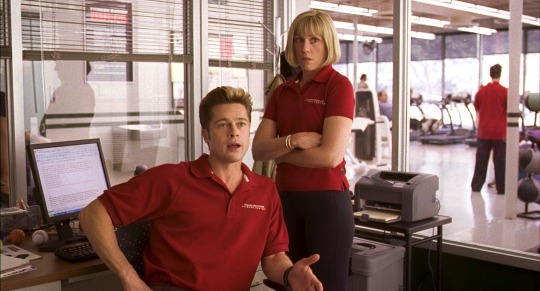
16. Burn After Reading (2008)
This film is what Intolerable Cruelty wanted to be... a property that is a hair closer to by the books, but full of a screwball approach that heralds to a forgotten era of film while using an incredibly stacked cast. Of all the Coen Brothers films I’ve seen, Burn After Reading feels like the property that all involved enjoyed making the most. Like many of the Coen Brothers films, the cast on this one is mega-stacked, and from top to bottom, everyone involved shines in roles that go against their standard types, or amplify the most off-beat aspects of their performing ability.
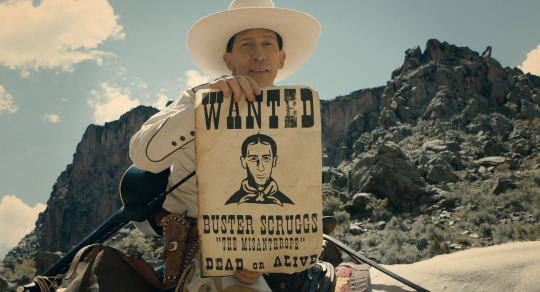
15. The Ballad of Buster Scruggs (2018)
The fact that Netflix was able to pull the Coen Brothers for a film is a win in itself, and with the duo choosing to do an anthology piece, Netflix was primed to maximize on their investment. While highly entertaining, however, the anthology nature of the property leaves it feeling a bit unfocused and disjointed at times... none of these stories really had enough meat on the bone to be expanded into feature-length films of their own, but for some reason, all parties involved passed on the opportunity to make a multi-episode serial rather than a film comprised of multiple tales. While using variance in storytelling methods and visual styles may work for some less talented directors, in the case of The Ballad of Buster Scruggs, it feels more like snack-sized bites in the place of true sustenance.
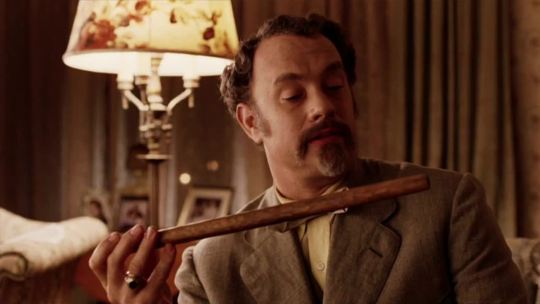
14. The Ladykillers (2004)
On paper, this film should have been a disaster. The Coen Brothers generally opt for original stories, so the fact that they chose to adapt such an obscure 1950s property for the modern day was strange, especially in light of the fact that most every element with the exception of Tom Hanks’ character was given a modern update. Somehow, despite all of this oddness, The Ladykillers managed to capture a sense of the classic Coen Brothers slapstick comedy that they famously established themselves with early on in their career. Tom Hanks is given the green light to go completely ridiculous, and to much of the viewers’ delight, he does so with great aplomb. His supporting cast shines, the comedic turn brings new energy to the story, and the southern gospel setting brings a rich sense of spirituality to an otherwise run of the mill film.

13. O Brother, Where Art Thou? (2000)
The Coen Brothers were essentially household names by the turn of the 20th century, but O Brother, Where Art Thou? propelled them into a legendary status. The grassroots mix of The Odyssey and the Robert Johnson crossroads legend took on a life of its own, leaving behind a soundtrack that birthed an entire generation of folk and bluegrass enthusiasts, as well as a film that showed the world George Clooney’s comedic chops. Much like The Ladykillers, O Brother puts viewers deep into the unfamiliar territory of Southern ‘discomfort’, with the African-American experience playing a major role in the narrative. Of all the Coen Brothers films one could use to introduce a stranger to their catalog, this one may be the best, as its infectious nature and stunning look leaves an impression on most anyone who has the pleasure to view it.
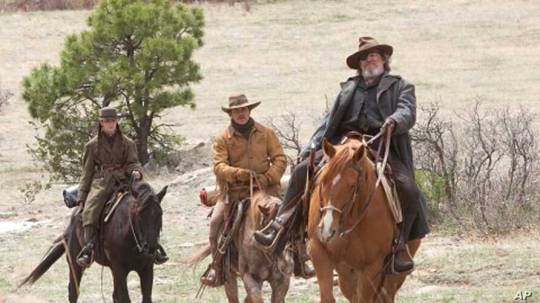
12. True Grit (2010)
The Coen Brothers had already covered a wide bit of genre ground within their first three decades, but surprisingly, they’d not done a true western up to that point (though many argue that No Country For Old Men is a modern take on the western). Therefore, when it was announced that their first western would be a remake of the iconic John Wayne film True Grit, many were surprised, and curious if they could pull it off. Not only did they pull it off, but in my humble opinion, they made a version that more than holds its own against the original. For the handful of big name and seasoned actors that signed on, it was the breakthrough performance of relative newcomer Hailee Steinfeld that outshined all. While The Ballad of Buster Scruggs was a fun revisit to the world of the western, True Grit was the kind of achievement that makes me want more traditional westerns from the duo.
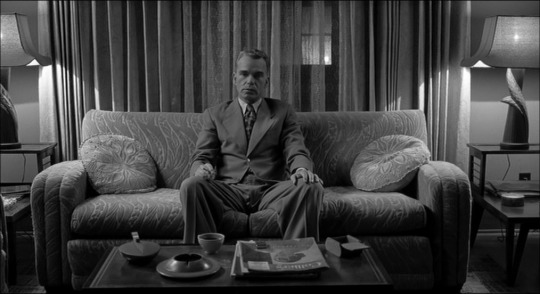
11. The Man Who Wasn’t There (2001)
Listing the Coen Brothers films is by far the most difficult ranking I’ve done to date, and the first film that really gave me trouble in terms of placement was The Man Who Wasn’t There. Personally, I find this film to be captivating and nearly flawless... Billy Bob Thornton’s detachment is rich and intrusive, which makes it all the more sinister when he does choose to exude even a hint of passion about something, be it positive or negative. The black and white photography, in league with the tone of the film, puts me in the mindset of films like In Cold Blood, and some of the sequences in the film stand out as some of the most iconic in the world of Coen Brothers films, especially the car crash. For a classic-style film noir, a genre that anyone with half a brain knew was a slam dunk for the Coens, the duo went above and beyond to both modernize and wholly embody the style. One of several Coen Brothers films that sits with you long after the final credits have faded away.

10. Inside Llewyn Davis (2013)
If this isn’t the darkest comedy in the Coen collection, it’s certainly giving the number one contender a run for its money. The intimacy of this film is unmatched within the broader collection of Coen characters, excluding The Dude, but the difference between Llewyn and The Dude is the personality equivalent of the difference between oil and water. You may marvel at Llewyn’s talent, but all the while, the film is screaming at you that “THIS IS A CHARACTER YOU SHOULD NOT ROOT FOR”. The symbolism found in the film is minimal while being incredibly effective in how it punctuates Llewyn’s personality and character, and the story structure is an equally subtle swerve that baits you into paying deeper attention, only to realize that the setup was the punchline the entire time.

9. The Hudsucker Proxy (1994)
I’m a sucker for a Coen Brothers comedy, especially the ones that play like human cartoons, and one of their absolute best was The Hudsucker Proxy. The writing on this film is so tight that it would absolutely pop if it were any tighter. The entire A Christmas Carol-esque approach to the story makes it a wonderful moralistic tale that makes people laugh so much that they often don’t realize they are being taught a lesson about morals, integrity and self-respect. Tons of familiar character actors fill the frames, everyone tasked with supporting roles fit firmly and comfortably into the created world, and the man trio of Tim Robbins, Jennifer Jason Leigh and Paul Newman are functioning on genius levels of performance... especially Jennifer Jason Leigh. While not quite a holiday movie, there is enough of a holiday sense that it could be shoehorned into a seasonal viewing, but any time set aside for this gem is the right time to watch it.
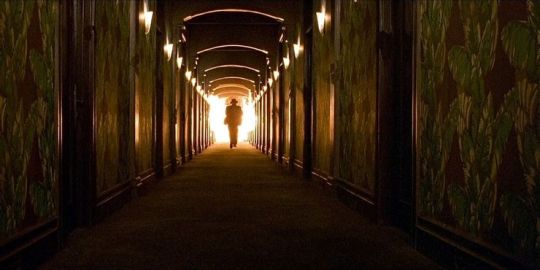
8. Barton Fink (1991)
In my humble opinion, this may be the strongest end to end performance from John Turturro in his long and storied career. As clear-cut fans of film, it is always a pleasure to see the Coen Brothers explore the world of film, and by using this approach, they are able to tell a bold, brash and haunting tale about the issues that come with assumptions about character and talent. The takes on Hollywood and the indifference of those in power, especially when it comes to assisting young and promising talents that may one day usurp them, and powerful. The real bow on the story, however, is the larger than life presence of John Goodman, who goes from being a slightly aggressive and overbearing sense of support to a literal madman by both name and action. For a film that mainly consists of individuals talking to one another about passion, talent and secrets, there is a kinetic energy that feeds the forward momentum of this movie, and for that, it stands out in the Coen collection.
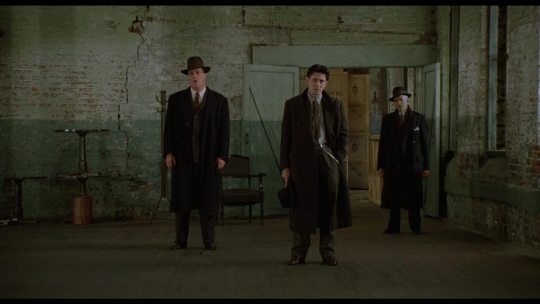
7. Miller’s Crossing (1990)
It’s not surprising that the Coen Brothers could make a compelling and memorable gangster film, but I don’t think that anyone expected a film as vicious and dark as Miller’s Crossing. For a duo that generally relies on nuance and contemplation to get their points across, this film certainly proves that they are more than capable of excelling in the direct approach as well. The era-specific costuming is outstanding, the murky city areas stand in stark contrast to the woods of the titular Miller’s Crossing, and the sheer volume of bullets are a stark reminder of the Prohibition-era story we are viewing. Gabriel Byrne shines in his lead role, bringing a world of fury, deceit and mistrust in tow with him. The iconic hat blowing in the wind serves as not only the biggest memorable moment from the film, but possibly also the single moment of peace and beauty found in a film that holds up a dirty mirror to a dark world.
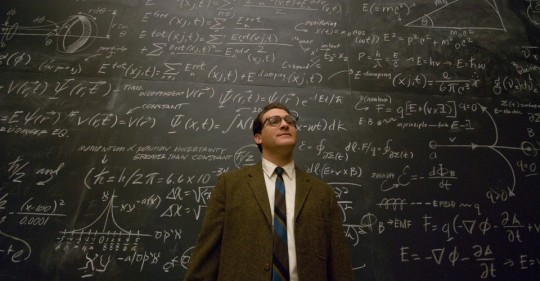
6. A Serious Man (2009)
Of all Coen Brothers films, this is easily the most underappreciated and slept on of the bunch. I’m a sucker for movies that embrace Murphy’s Law, and when mixed with the parable nature of the Book of Job, we are presented with a darkly comic and relatively unique version of the hero’s journey. The way that the personal, professional and philosophical problems pile up on Michael Stuhlbarg’s Larry are meant to be felt by the audience, and the way that his bad luck boomerangs out into the world during the film’s resolution must be seen in order to be believed. The way that destiny and chance dance around one another in this film is narratively breathtaking, and for such a subtle film, it is a truly remarkable achievement.

5. No Country For Old Men (2007)
When you think of the Coen Brothers, you don’t necessarily think of evil incarnate, and yet, the duo succeeded in capturing a character in the form of Anton Chigurh, the closest thing to the Terminator that the duo has ever created (to my knowledge). The story is a wonderful, subtle tale of how the times can change into something we don’t recognize before we recognize the change, but it is easily Javier Bardem’s iconic performance that gives this film all of its power and ominous energy. His unyielding forward momentum, his disdain for obstacles in any form, and his disregard for human life are enough to instill real fear into those who partake in viewings, and his presence will more than likely haunt you far beyond completion of the film. A true modern-day masterpiece that would have been higher, if not for...

4. Blood Simple (1984)
What a powerful debut, and one that not only hinted at, but outright put the spotlight on the promise of the Coen Brothers when it came to stark visuals and stunning storytelling. For such a simple, small scale story, the tangled web that is woven is a slippery slope of deception and distrust that leaves little to no survivors in its wake. The scale of the film is deceptively small, but the quality shines in every aspect that it can. Seeds are placed that pay off wonderfully, and the color palette presented gives the film the feeling of a Technicolor film-noir. Much like A Serious Man, Blood Simple deserves to be talked about and held up much more than it is by fans of film.
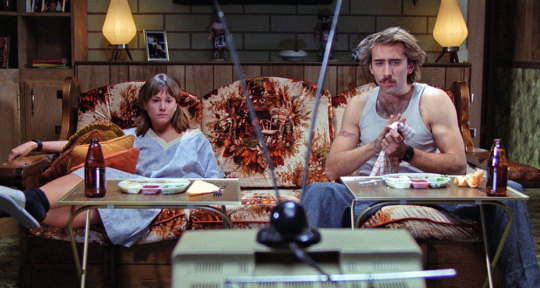
3. Raising Arizona (1987)
What a wonderfully ridiculous movie about something as simple as the trials and tribulations of navigating love, marriage and parenthood. The most hilarious aspect of this film, in my opinion, is how it feels like a living and breathing cartoon, both in terms of the character performances and the outrageous events that take place within the world of the film. Nicolas Cage is operating on a completely different level, Holly Hunter is equal parts charming and hilarious, Trey Wilson is wonderfully over the top, John Goodman and William Forsythe bring excess hilarity to the wild proceedings, and Randall “Tex” Cobb is downright iconic in terms of his ridiculous character. The pacing of the film is breakneck and feverish, the comedy hits never stop coming, and the utter charm emanating from the midst of the caper presented is infectious. As a second film, this could not be any more different than Blood Simple, and yet somehow, it connected so vividly with viewers that it remains a must-watch film to this day.

2. Fargo (1996)
What is there to be said about Fargo that has not already been said? For a duo with more iconic films to their name than some directors have completed films, Fargo was an immediate signal that the limits of the Coen Brothers’ creativity and skill had not even began to show its full breadth. Within less than five years of release, the film was already heralded as a classic (of all-time, not just modern day), the mystery surrounding its possibility of being based on a true story built a world of intrigue around the movie, and it has gone on to create a universe of its own in the form of an FX TV show that recently wrapped its fourth season. There is not a wasted role in this film, and to this day, any movie fan worth their salt will happily bust out their version of a Minnesota accent that is almost certainly based on one of the many memorable characters that inhabit the world of Fargo. Numerous actors, including William H. Macy, Frances McDormand and Steve Buscemi, all found breakout success in the wake of this wonderful film.

1. The Big Lebowski (1998)
Was there ever any doubt for this placement? For everything that Fargo did in terms of success within the world of the film industry, The Big Lebowski did that and more for the worlds of the counter-culture and cult film fans. The story we are presented with is so simple, yet so ridiculous in its journey, that it almost insists on viewers revisiting it over and over. Like many Coen Brothers films, nobody cast in the film is wasted or misused, and due to these stellar performances, the film finds itself as one of the most quotable in recent memory. Much like the performances of the cast, the writing does not waste any words or opportunities, often referring back to itself in extremely subtle and nuanced ways that present themselves over time, and to hilarious effect. Nobody would have expected a film of this nature to have a fandom, and yet, the legions of fans for this film are unique to that of the Coen Brothers catalog in the sense of their dedication, devotion to and love of the movie. While not everyone’s cup of tea upon first viewing, The Big Lebowski is truly an example of the gift that keeps on giving.
If the Coen Brothers never make another film, they’ve already created and achieved more in their journey that most filmmakers can dream of. Many of their films could honestly be considered works of art, and nearly all of them are compelling with an ability to leave deep and lasting impressions. If you are unfamiliar with the Coen Brothers, do yourself a favor and check out their work, as it may bring a new sense of invigoration to your love of film.
Editor’s Note (12/10/2020) : Inside Llewyn Davis added to the number 10 position, all films ranked lower adjusted accordingly.
#ChiefDoomsday#DOOMonFILM#JoelCoen#EthanCoen#CoenBrothers#BloodSimple#RaisingArizona#MillersCrossing#BartonFink#TheHudsuckerProxy#Fargo#TheBigLebowski#OBrotherWhereArtThou#TheManWhoWasntThere#IntolerableCruelty#TheLadykillers#NoCountryForOldMen#BurnAfterReading#ASeriousMan#TrueGrit#InsideLlewynDavis#HailCaesar#TheBalladOfBusterScruggs
4 notes
·
View notes
Text
The Mosley Review: Best Films of 2019

Wohoo! 2019 has come and gone and man did it fly by. This year we had sooooo many fantastic films and this year was probably the hardest list to put together. I really wanted to include alot more, but I had to make a few cuts. Now I tend to keep my list to the traditional 10 films, but on some occasions I've extended it to 11. This is one of those occasions. I have one runner up that is worth mentioning and I think it should not be missed.
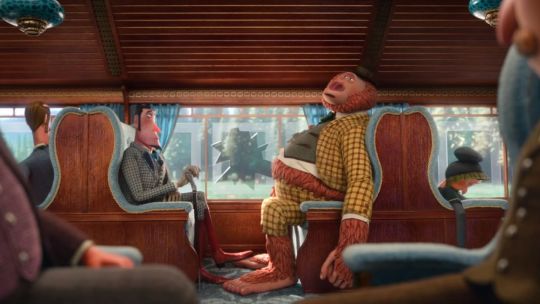
Missing Link: Many animated films are computer generated now and the art of hand drawn animation is rarely shown. The one type of animation that is all but extinct is stop motion animation. It takes time, patience and passion to bring to life characters with such sophistication and care in an almost forgotten art form. The masterminds at Laika are truly imaginative artist and this film shows that in every frame. Not many films take the story of the myth behind Sasquatch to fun places without being hokey and I was relieved that this film took it seriously and pumped so much fun and heart into the story and I think this was a hidden gem of 2019. Click the title for my full review.
Now, on to my list of 2019's best films of the year. If you want my full review of each film then go ahead and click the title of each film. First one up is definitely a fantastic sequel to a film that the author hated, but loved the film adaptation of his second book.

Doctor Sleep: The Shining is a classic that can never really be touched. Stephen King is famously known for disliking the film adaptation of his novel, but with his blessing placed upon Mike Flanagan's vision for the sequel novel, we got this magnificent film. Not only does this film pay tribute to Stanley Kubrick's film, but it also follows the same rules and visual structure while keeping the film fresh. The tone was consistent and the performances were across the board amazing. Ewan McGregor, Rebecca Ferguson and the talented Kyliegh Curran deliver absolute greatness. This film features stunning and intriguing dark moments, but definitely has one of the most disturbing scenes I've ever seen and its all because of Jacob Tremblay's performance in THAT scene.

Ready or Not: How many times have we seen the family initiation story in a romantic comedy? A dozen times I tell you! Well how about you take the same concept, throw in a fun horror version of hide and seek with a hint of the supernatural and great dark comedic writing. You get this fantastic film that is all of that and more. Luckily I stayed away from any major trailers for this film because in retrospect, the R rated trailer gave away too many of the fun gags. The performance of each family member was awesome and this was a standout performance for Samara Weaving. Every year from now on, this film will be on my Halloween watchlist. I loved this film and I can't recommend it enough.
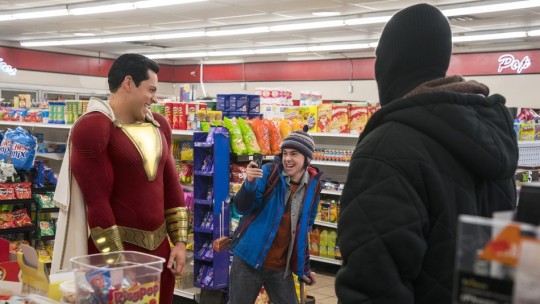
Shazam!: Batman (1989), Superman (1978), The Dark Knight Trilogy and Spider-man: Into the Spider-verse are just to name a few of perfect adaptations of a comic book character to screen. This film was beyond perfection in many ways and the best DC film to date. This film had the right amount of fun, darkness and heart that embodies the life of the titular character. I could see the amount of genuine fun the cast was having on screen and the heartfelt performances of Asher Angel and Zachary Levi were outstanding. Jack Dylan Grazer stole the film with his amazing comedic speed and wit. This was truly a film I had high hopes for and it didn't disappoint.
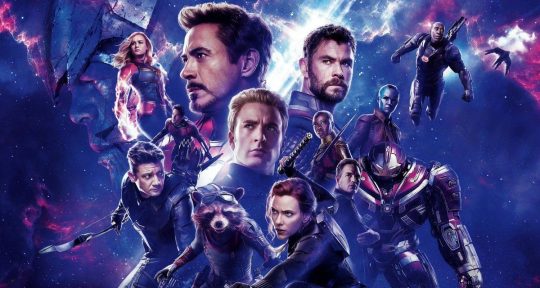
Avengers: Endgame: How do you start a story in 2008 and bring it to an amazing and satisfying conclusion that wraps up 11 years of storytelling? You have a plan, a clear vision from the very beginning and with that it'll special success. Producer Kevin Feige set out on a journey to bring to life some of the best superheroes and keep them together in a cohesive and long formed narrative to complete a saga that's never been done before. He did it with the best talent behind each film's camera and The Russo Brothers have delivered the most epic film the superhero film genre has ever seen. I have waited my entire life to hear Captain America say "Avengers Assemble!" and I'm so happy I've lived long enough for my dream to come true. This was an emotional journey and end to The Infinity Saga. I really can say so much more about this crowning achievement in storytelling, but I'll keep this summary short.

Rocketman: It was only a mater of time before we got a biopic about the incomparable music legend Elton John. I was hoping that it would not shy away from his sexuality, addictions and his bright and explosive since of style. Well this film jumped right in and held nothing back and I loved every bit. It was truly a fantastical film that had enough gravity and style. The musical locations illustrate his most important moments in his life and are visually stunning and accurate recreations of his most iconic performances. Taron Egerton was Elton John and I loved that he sang all the music. This was truly a masterpiece.
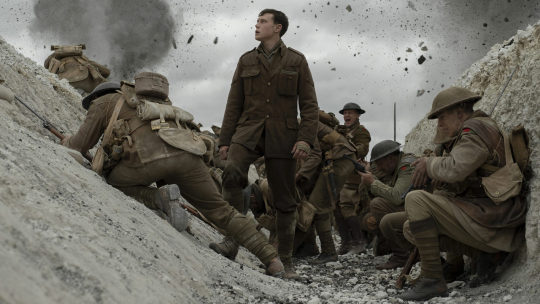
1917: World War II films are a dime a dozen, but the World War I films are rare. Sam Mendes is one of the best directors and all of his films take you on a journey through the eyes, mind and soul of a character and he did exactly that in this film. The fact that this film is almost shot completely in one continuous take, gives every moment gravitas and tension as you watch our main character go along and across enemy lines to prevent an ambush. The score was truly haunting by Thomas Newman and my favorite piece from this film was from the flare scene. Such an stunning achievement in filmmaking should not be missed.

Joker: The clown prince of crime has had many iterations over the past 80 years. The most influential and canonical version of the character came from Frank Miller's The Killing Joke. Heath Ledger's take was iconic and made you scared because of his unpredictability. Joaquin Phoenix has taken the character and given a truly disturbing and authentic performance. As Arthur Fleck, we see through a constantly unraveling psyche, a man become a new and real kind of monster. Not only is this version the most unsettling, but it was beautiful. The cinematography was great and I loved how we got into the mind and heart of the character when he wasn't even speaking. This is a definition of how a person being pushed through horrible conditions can truly become a monster and yet be free. I loved this film and I think it will be studied in many acting classes from here on out.
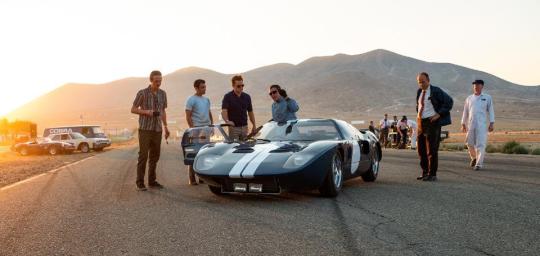
Ford v Ferrari: There needs to be more racing films of this caliber! I love racing films that are not just about the cars, but also the drivers and their stories. This film was based on the true friendship between Carol Shelby and Ken Miles and I can't say enough how much attention to detail and heart that was put into every frame. The sound design in this film was crisp and powerful. The performances by both Matt Damon and Christian Bale was truly amazing and they had the best chemistry. Their fight scene was the funniest and most realistic fight I've ever seen between 2 friends. James Mangold is one of my favorite directors because of his focus on characters and story first before the action. This was a love letter to the world of racing and a respectful look at the lives of these pioneers of ingenuity and racing.
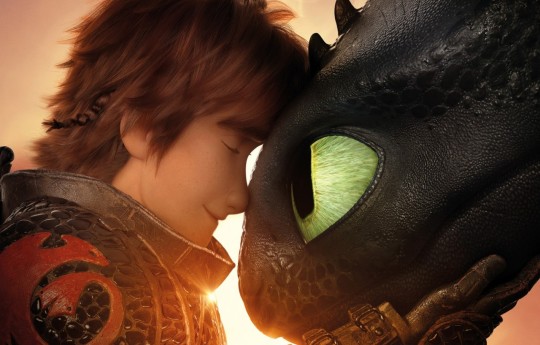
How To Train Your Dragon: The Hidden World: How do you make a perfect trilogy? How do you wrap it up with a satisfying and emotional ending? You focus on the story and stay true to the message and heart you started with in the beginning. You let the character bonds naturally grow and make each adventure a learning experience. This film was a perfect ending to the franchise and I can't stress how much I felt like I was with Hiccup and Toothless on their journey to this conclusion. The performances from the cast were stellar as always and although the villain may not have been as great, he still was a good addition. The visuals were the best and the textures in the scales and sand were out of this world. The score by John Powell truly brought me to tears as I got to say goodbye to my favorite companions. If you ever owned a pet, you known the emotional bond that is forged. This was the ultimate pay off and as a pet owner I saw my dog in Toothless' eyes. I will miss this franchise. If you're not crying by the end of this film then something is wrong with you.

The Peanut Butter Falcon: There are some independent films that take a risk in going outside of the norm and telling a story that nobody would have ever dreamed. This film was truly something special and I can't tell you how happy I was throughout. This film focuses on an individual with down syndrome whose dream is to become a wrestler and it is something truly inspirational and heartwarming. Zack Gottsagen was truly brilliant and awesome in this film. I loved his journey and his will to keep going. Shia Lebouf delivers an equally powerful performance and his chemistry with Zack was very sweet. This is one of the best films of 2019 and the most important films of the decade.
And here we are ladies and gentlemen! This is the moment you've all been reading toward. This film was an automatic choice for me the moment the end credits rolled. The crowing jewel of 2019 is none other than.....

Booksmart: I have seen so many high school teen comedies about partying or loosing your virginity before graduation, but never have I seen a film so engaging and focused on the bond of two bestfriends. Their bond was the heart and soul of the film and you couldn't have asked for a better pair of actresses. Beanie Feldstein and Kaitlyn Dever were beyond perfection in every moment of this film and they had me cracking up left and right. Their adventure over the course of one night was truly fun and you are along for the hilarious ride. Billie Lourd nearly stole the whole film out from under them with her surprising and hilarious appearances. The music choices in the film were awesome as well. The comedy in this film was so fresh and from the first 6 minutes of the film you’re locked into these two ladies chemistry. I can't stress enough how much joy this film brought me and for a film to be on my mind for the entire year and to have me constantly recommending it to everyone I know is an achievement of itself. Olivia Wilde has directed a true masterpiece and new definition of a coming of age story. I can't stop gushing about this film so I'll finish off by saying WATCH THIS FILM!
And that is my list of the best films of 2019 and man has it been a great year in film. Lets hope 2020 starts off the decade with a bang! Thanks for reading everyone.
#best films of 2019#missing link#laika#hugh jackman#zack galifianikis#doctor sleep#stephen king#Ewan McGregor#ready or not#samara weaving#avenger endgame#robert downey jr.#Rocketman#taron egerton#elton jon#1917#Sam Mendes#joker#Joaquin Phoenix#ford v ferrari#james mangold#the peanut butter falcon#shia lebouf#booksmart#Olivia Wilde#beanie feldstein#kaitlyn dever#billie lourd
61 notes
·
View notes
Text
Washington DC and the Baltimore playlist
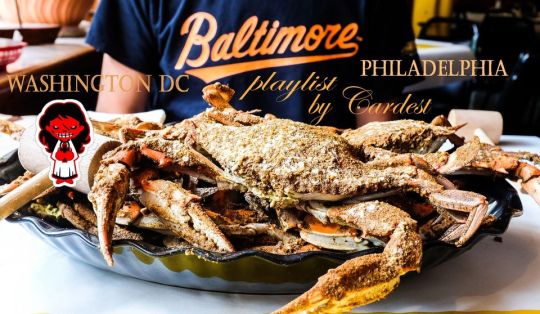
DC Sound Attack!
Well, if Biden is waiting in the wings to move in to the White House and well, gets a bit bored or just has some spare time, he can totally tune in to my Washington DC playlist!
And Baltimore!
Maybe he and the new VP can grab a crab cake from Lexington Market!
Anyway, what a town DC is, the bands, the songs, the TV shows and who can forget the Exorcist?
So I just had to put a list of songs together from DC, from Virginia, Baltimore and surrounds.
You may have see my Philadelphia playlist added a few days ago below.
I wonder what Ian Mackaye would think of this list

WASHINGTON D.C
001 Clutch - D.C. Sound Attack!
002 Foo Fighters - The Feast and the Famine
003 Rollins Band - Change It Up
004 NCIS-Theme Song
005 Bad Brains - Pay To Cum
006 Prong - Banned In Dc
007 Parliament - Give Up The Funk (Tear The Roof Off The Sucker)
008 Fugazi - Bulldog Front
009 KMFDM - Stars and Stripes
010 Dead Kennedys - Stars and Stripes of Corruption
011 Vlado Kreslin in Hans Theessink - Bourgeois blues
012 TROUBLE FUNK - Spin Time
013 Ministry - Ass Clown
014 Marvin Gaye - What's Going On
015 X Files - Theme Song
016 Clutch - How To Shake Hands
017 The Rolling Stones - Sweet Virginia
018 Pig Destroyer - The Adventures of Jason and JR
019 Experience Unlimited - Da Butt
020 The Evens - Dinner With The President
021 Steppenwolf - Draft Resister
022 The Blackbyrds - Blackbyrds Theme
023 Oneness of Juju - African Rhythms
024 Pontiak - Ignorance Makes Me High
025 Ex Hex - Rainbow Shiner
026 Parliament Chocolate City
027 Bill Hayes - The Ballad Of Davy Crockett
028 Staple Singers - Washington, We're Watching You
029 The Razz - You Can Run (But You Cant Hide)
030 Criminal Minds TV theme bits
031 Clutch - White's Ferry
032 Incredible Bongo Band - Apache
033 Jimmy Newman - Washington, DC
034 CHUCK BROWN & THE SOUL SEARCHERS - BUSTIN LOOSE
035 Weird Al Yankovic - Party In The CIA
036 Overkill - King Of The Rat Bastards
037 CANNABIS CORPSE - Zero Weed Tolerance
038 Funkadelic - One Nation Under a Groove
039 the coup - piss on your grave
040 Primus - Electric Uncle Sam
041 Pocahontas OST - The Virginia Company
042 OFF! - Elimination
043 THE HONEY DRIPPERS - Impeach The President
044 Roy Ayers - D.C. City
045 Chain & the Gang - The logic of night
046 Pentagram - Walk Alone
047 Duke Ellington - Caravan
048 Clutch - Son of Virginia
049 The Messthetics - Serpent Tongue
050 House of Cards - Main Title Theme
051 Windhand - Old Evil
052 While Heaven Wept - Hour Of Reprisal
053 Genocide Pact - Induction
054 Nation of Ulysses ~ You're my Miss Washington D.C.
055 Minor Threat - Betray
056 ILSA - Cult Of The Throne
057 Stop the World-The Clash
058 The Dismemberment Plan - The City
059 Les Baxter - The City
060 America - Old Virginia
061 Talking Heads - Don't Worry About The Government
062 Gwar - The Reaganator
063 Junk Yard Band - Loose Booty
064 Chicago - State of the Union
065 Clutch - I Have The Body Of John Wilkes Booth
066 Carol Leon - Washington, DC song
067 Rollins Band - Icon
068 COUGH - Crippled Wizard
069 The Magnetic Fields - Washington D.C.
070 Washington DC's new State Song, John Oliver
071 Alice In Chains - Never Fade
072 Animals as Leaders - Another Year
073 Deceased - Mrs. Allardyce
074 Tru Fax and The Insaniacs - Love Love Love
075 the hidden hand - someday soon
076 Sourvein - D.I.L.L.I.G.A.F.
077 Pig Destroyer - Alexandria
078 Drugs of Faith - The False War
079 Ex Hex - Diamond Drive
080 The Exorcist OST - Main Theme Tubular Bells
081 the slickee boys - gotta tell me why
082 Ministry - The Dick Song
083 Egg Hunt - We All Fall Down
084 Trouble Funk - Drop the Bomb
085 Q and Not U - End The Washington Monument (Blinks) Goodnight
086 Foo Fighters - Arlandria
087 Die Cheerleader - Washington D.C.
088 The Jesus Lizard - Queen For A Day
089 King Giant - The One That God Forgot To Save
090 Gil Scott Heron - Washington D.C
091 Unrest - Bavarian Mods
092 Rites of Spring - For Want Of
093 American Dad! TV show theme
094 Readeez Presents The U.S. Presidents Song
095 Darkest Hour - No God
096 Fugazi - Facet Squared
097 Rollins Band - Wreck-Age
098 R E M - Don't Go Back To Rockville
099 Dag Nasty - Trying
100 Bad Brains - Rise
101 Municipal Waste - Masked by Delirium
102 Escape-ism - Bodysnatcher
103 Tilt - Arkade Funk
104 Nonchalant - 5 O'Clock
105 Jawbox - Savory
106 The Staple Singers - Long Walk To D.C.
107 Teen Idles - Fleeting Fury
108 Burnt by the Sun - Washington Tube Steak
109 Chain and the Gnag - [Ive Got] Privilege
110 Priests- Ice Cream
111 Lamb of God - Checkmate
112 Lonnie Liston Smith - Sunburst
113 DEVO - Secret Agent Man
114 Duke Ellington - Money Jungle
115 Butch Willis - Flashback
200 William DeVaughn - Be Thankful for What You Got
222 Peabo Bryson - D.C Cab
666 Get Smart Original Theme

Baltimore
001 Divine - You Think Youre a Man
002 Bill Callahan - Javelin Unlanding
003 Clutch - Pigtown Blues
004 Cry Baby Soundtrack - King Cry Baby
005 PIG DESTROYER - Baltimore Strangler
006 Loo Reed - Edgar Allan Poe
007 The Fleshtones - The Girl From Baltimore
008 Gram Parsons - Streets of Baltimore
009 Prince - Baltimore (feat. Eryn Allen Kane)
010 Mr Bungle - Carry Stress In The Jaw
011 george harrison - baltimore oriole
012 George Brigman - Jungle Rot
013 Primus - DMV
014 Strawberry Alarm Clock - Barefoot in Baltimore
015 Nina Simone - Baltimore
016 The Obsessed - Punk Crusher
017 Scott Walker - The Lady Came From Baltimore
018 Clutch - The Great Outdoors!
019 Frank Zappa - Whats New In Baltimore
020 Mother Freedom Band - Touch Me
021 Misery Index - The Calling
022 Internal Void - Window to Hell
023 Trapped Under Ice - Stay Cold
024 Agathocles - Blatimore Mince Meat
025 FULL OF HELL - Deluminate
026 Dirt Woman - Fades to Greed
027 Wormhole - Nurtured in a Poisoned Womb
028 RHCP - Millionaires Against Hunger
029 Swell Fellas - Placebo
030 Clutch - Hot Bottom Feeder
031 Black Lung - Ancients
032 Dying Fetus - Fixated On Devastation
033 Motorhead - Civil War
034 NOISEM - Deplorable
035 The Brandos - Gettysburg
037 Visceral Disgorge - Fucked into Oblivion
043 SECRET CUTTER - Trampled By Light
044 Cemetery Piss - Such the Vultures Love
045 Pig Destroyer - [Head Cage #04] Circle River
046 Pockets - Come Go With Me
047 War On Women - Confess
048 Horse Lords - Against Gravity
049 Cry Bay OST - Doin time for being young
050 Clutch - Earth Rocker
666 Locrian - Two Moons

And what a way to meet up in the middle with Clutch teaming up with randy from Lamb of God.
https://www.youtube.com/watch?v=4Y6EVouZm-I
#washington dc#washington dc playlist#baltimore playlist#baltimore#maryland#the exorcist#songs about washington dc#fugazi#henry rollins#john waters#cry baby#divine#full of hell#clutch#pig destroyer#locrian
4 notes
·
View notes
Text
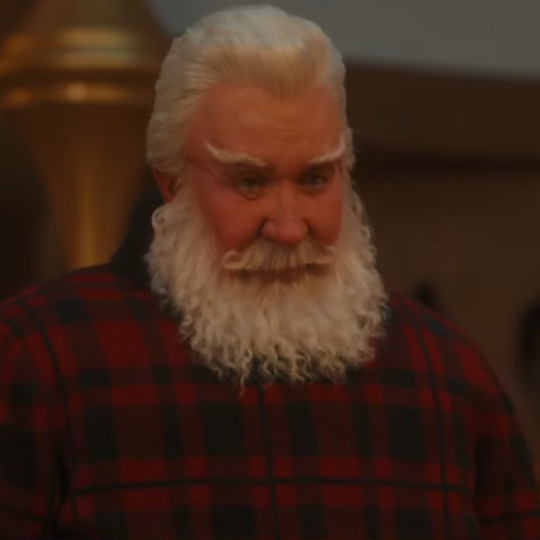
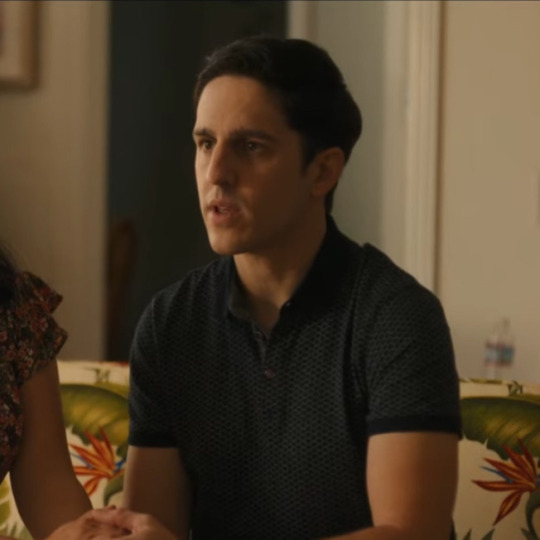



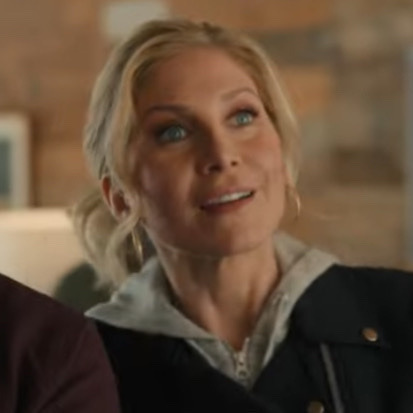



Trailer 2 Icons
The Santa Clauses (2022)
*feel free to use, no credit needed
#the santa clause icons#the santa clause#disney icons#the santa clauses#bernard the elf icons#carol calvin icons#carol newman icons#scott calvin icons#betty the elf icons#noel the elf icons#buddy calvin icons#charlie calvin icons
53 notes
·
View notes
Photo
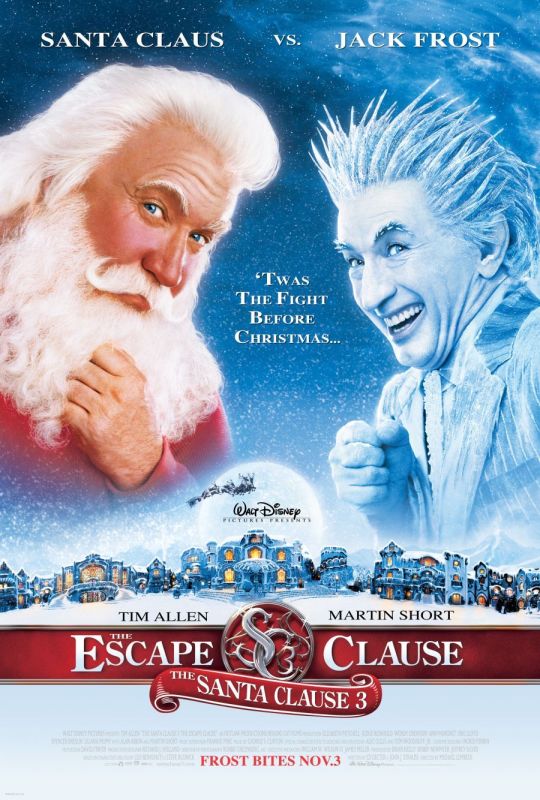
The Santa Clause 3: The Escape Clause
“The Santa Clause 3: The Escape Clause” ended being all style and no substance, cementing the franchise as forgettable.
Scott Calvin and Carol Newman have been living at the North Pole together for four years now. Carol is expecting a baby and is somewhat upset that Scott is busy year-round. To remedy this, Scott invites her parents to the North Pole but must keep it a secret from them, so he tells them they’re visiting Canada. Meanwhile, Jack Frost has been promoting himself as the new Christmas icon because he’s jealous of Santa Claus’s popularity. Because of this, the Council Of Legendary Figures sentences Jack to community service in Santa’s Workshop. There, he stirs up trouble and tries to get Scott to relinquish his position as Santa Claus.
I’ve said that the last two films had potential and didn’t capitalize on them. This film didn’t have any of that. From the opening of this film, I was impressed at how much the film had progressed visually. The effects were half-decent and somewhat inspired. However, it loses all that charm as the movie goes on. I appreciated the fact that they didn’t make Carol blindly happy in this film. She was essentially extorted to become Scott’s new wife in the last film and it wouldn’t have sat right with me if everything was all better now. As expected, she’s unhappy because she’s being neglected due to Santa’s busy work-life. Honestly, I don’t know why they had Carol be pregnant throughout this film. It’s mentioned once in the beginning and once at the end when she ends up giving birth. My best guess is that they wanted to cram that ‘deliver before you deliver’ joke in. Jack Frost is meant to be the antagonist of this film, but he’s more of a nuisance than anything. I like his costume design, but that’s about it. He’s a background bother until the script needs him to step up. Before that, we’re subjected to half the movie being about a workshop disaster followed by Scott needing to solve the problem and the in-laws being progressively more and more disapproving. The Escape Clause is mentioned out of nowhere during the meeting of the Council Of Legendary Figures just so Jack Frost could use that against Santa. The whole process is convoluted and they had to jump through flaming hoops to get Jack to trick Santa into invoking the Escape Clause. Meanwhile, I was sitting there wondering why the writers just didn’t make the process easier. Jack Frost obviously abuses his power as Santa, a weirdly dry musical act ensues, and Scott gets his powers back. The only interesting part of that whole third act was the small glimpses we got to see of the lives that were altered from Scott never becoming Santa. I wish we could’ve seen more of that, but of course, the film never wants to do anything interesting. By the end of this movie, I had a realization. Scott affects the lives of the people around him negatively. His son is basically forced into a life of lies. His wife was basically kidnapped and forced to lie about her life to her parents. In the last movie, he states that being Santa is a big responsibility, yet he’s shown time and time again that he’s not willing to make personal sacrifices for the children around the world. I hope that if they make another sequel, they would focus on Scott passing the torch on to someone else who’s more fit to be Santa Claus because he sure as hell doesn’t deserve it.
★★
Watched on December 19th, 2020
#The Santa Clause 3: The Escape Clause#November#2006#Christmas#Comedy#Children's#G#Michael Lembeck#December 2020#2 stars
1 note
·
View note
Link
A racial realist IS a white supremacist!!!
By Greg Miller
In unguarded moments with senior aides, President Trump has maintained that Black Americans have mainly themselves to blame in their struggle for equality, hindered more by lack of initiative than societal impediments, according to current and former U.S. officials.
After phone calls with Jewish lawmakers, Trump has muttered that Jews “are only in it for themselves” and “stick together” in an ethnic allegiance that exceeds other loyalties, officials said.
Trump’s private musings about Hispanics match the vitriol he has displayed in public, and his antipathy to Africa is so ingrained that when first lady Melania Trump planned a 2018 trip to that continent he railed that he “could never understand why she would want to go there.”
When challenged on these views by subordinates, Trump has invariably responded with indignation. “He would say, ‘No one loves Black people more than me,’ ” a former senior White House official said. The protests rang hollow because if the president were truly guided by such sentiments he “wouldn’t need to say it,” the official said. “You let your actions speak.”
In Trump’s case, there is now a substantial record of his actions as president that have compounded the perceptions of racism created by his words.
Over 3½ years in office, he has presided over a sweeping U.S. government retreat from the front lines of civil rights, endangering decades of progress against voter suppression, housing discrimination and police misconduct.
His immigration policies hark back to quota systems of the 1920s that were influenced by the junk science of eugenics, and have involved enforcement practices — including the separation of small children from their families — that seemed designed to maximize trauma on Hispanic migrants.
With the election looming, the signaling behind even second-tier policy initiatives has been unambiguous.
After rolling back regulations designed to encourage affordable housing for minorities, Trump declared himself the champion of the “Suburban Lifestyle Dream.” He ordered aides to revamp racial sensitivity training at federal agencies so that it no longer refers to “White privilege.” In a speech at the National Archives on Thursday, Trump vowed to overhaul what children are taught in the nation’s schools — something only states have the power to do — while falsely claiming that students are being “fed lies about America being a wicked nation plagued by racism.”
The America envisioned by these policies and pronouncements is one dedicated to preserving a racial hierarchy that can be seen in Trump’s own Cabinet and White House, both overwhelmingly white and among the least diverse in recent U.S. history.
Trump’s push to amplify racism unnerves Republicans who have long enabled him
Scholars describe Trump’s record on race in historically harsh terms. Carol Anderson, a professor of African American Studies at Emory University, compared Trump to Andrew Johnson, who succeeded Abraham Lincoln as president and helped Southern Whites reestablish much of the racial hegemony they had seemingly lost in the Civil War.
“Johnson made it clear that he was really the president of a few people, not the American people,” Anderson said. “And Trump has done the same.”
A second White House official who worked closely with Trump quibbled with the comparison, but only because later Oval Office occupants also had intolerant views.
“Woodrow Wilson was outwardly a white supremacist,” the former official said. “I don’t think Trump is as bad as Wilson. But he might be.”
White House officials vigorously dispute such characterizations.
“Donald Trump’s record as a private citizen and as president has been one of fighting for inclusion and advocating for the equal treatment of all,” said Sarah Matthews, a White House spokeswoman. “Anyone who suggests otherwise is only seeking to sow division.”
No senior U.S. official interviewed could recall Trump uttering a racial or ethnic slur while in office. Nor did any consider him an adherent of white supremacy or white nationalism, extreme ideologies that generally sanction violence to protect White interests or establish a racially pure ethno-state.
White House officials also pointed to achievements that have benefited minorities, including job growth and prison-sentence reform.
But even those points fade under scrutiny. Black unemployment has surged disproportionately during the coronavirus pandemic, and officials said Trump regretted reducing prison sentences when it didn’t produce a spike in Black voter support.
And there are indications that even Trump’s allies are worried about his record on race. The Republican Party devoted much of its convention in August to persuading voters that Trump is not a racist, with far more Black speakers at the four-day event than have held top White House positions over the past four years.
This story is based on interviews with more than two dozen current and former officials, including some who have had daily interactions with the president, as well as experts on race and members of white supremacist groups. Many spoke on the condition of anonymity, citing a desire to provide candid accounts of events and conversations they witnessed without fear of retribution.
Coded racial terms
Most attributed Trump’s views on race and conduct to a combination of the prevailing attitudes of his privileged upbringing in the 1950s in what was then a predominantly White borough of New York, as well as a cynical awareness that coded racial terms and gestures can animate substantial portions of his political base.
The perspectives of those closest to the president are shaped by their own biases and self-interests. They have reason to resist the idea that they served a racist president. And they are, with few exceptions, themselves White males.
Others have offered less charitable assessments.
Omarosa Manigault Newman, one of the few Black women to have worked at the White House, said in her 2018 memoir that she was enlisted by White House aides to track down a rumored recording from “The Apprentice” — the reality show on which she was a contestant — in which Trump allegedly used the n-word. A former official said that others involved in the effort included Trump adviser Hope Hicks and former White House spokeswoman Sarah Sanders.
The tape, if it exists, was never recovered. But Manigault Newman, who was forced out after clashing with other White House staff, portrayed the effort to secure the tape as evidence that aides saw Trump capable of such conduct. In the book, she described Trump as “a racist, misogynist and bigot.”
Mary L. Trump, the president’s niece, has said that casual racism was prevalent in the Trump family. In interviews to promote her recently published book, she has said that she witnessed her uncle using both anti-Semitic slurs as well as the n-word, though she offered few details and no evidence.
Michael Cohen, the president’s former lawyer, has made similar allegations and calls Trump “a racist, a predator, a con man” in a newly published book. Cohen accuses Trump of routinely disparaging people of color, including former president Barack Obama. “Tell me one country run by a Black person that isn’t a s---hole,” Trump said, according to Cohen.
These authors did not provide direct evidence of Trump’s racist outbursts, but the animus they describe aligns with the prejudice Trump so frequently displays in public.
In recent months, Trump has condemned Black Lives Matter as a “symbol of hate” while defending armed White militants who entered the Michigan Capitol, right-wing activists who waved weapons from pickup trucks in Portland and a White teen who shot and killed two protesters in Wisconsin.
Trump has vowed to safeguard the legacies of Confederate generals while skipping the funeral of the late congressman John Lewis (D-Ga.), a civil rights icon, and retweeted — then deleted — video of a supporter shouting “White power” while questioning the electoral eligibility of Sen. Kamala D. Harris (D-Calif.), the nation’s first Black and Asian American candidate for vice president from a major party. In so doing, Trump reanimated a version of the false “birther” claim he had used to suggest that Obama may not have been born in the United States.
These add to an already voluminous record of incendiary statements, including his tweet that minority congresswomen should “go back” to their “crime infested” countries despite being U.S.-born or U.S. citizens, and his claim that there were “very fine people on both sides” after torch-carrying white nationalists staged a violent protest in Charlottesville.
In a measure of Trump’s standing with such organizations, the Stormfront website — the oldest and largest neo-Nazi platform on the Internet — recently issued a call to its followers to mobilize.
“If Trump doesn’t win this election, the police will be abolished and Blacks will come to your house and kill you and your family,” the site warned. “This isn’t about politics anymore, it is about basic survival.”
As the election approaches, Trump has also employed apocalyptic language. He recently claimed that if Democratic nominee Joe Biden is elected, police departments will be dismantled, the American way of life will be “abolished” and “no one will be SAFE.”
Given the country’s anguished history, it is hard to isolate Trump’s impact on the racial climate in the United States. But his first term has coincided with the most intense period of racial upheaval in a generation. And the country is now in the final stretch of a presidential campaign that is more explicitly focused on race — including whether the sitting president is a racist — than any election in modern American history.
Biden has seized on the issue from the outset. In a video declaring his candidacy, he used images from the clashes in Charlottesville, and said he felt compelled to run because of Trump’s response. He has called Trump the nation’s first racist president and pledged to use his presidency to heal divisions that are a legacy of the country’s “original sin” of slavery.
Exploiting societal divisions
Trump has confronted allegations of racism in nearly every decade of his adult life. In the 1970s, the Trump family real estate empire was forced to settle a Justice Department lawsuit alleging systemic discrimination against Black apartment applicants. In the 1980s, he took out full-page ads calling for the death penalty against Black teens wrongly accused of a rape in Central Park. In the 2000s, Trump parlayed his baseless “birther” claim about Obama into a fervent far-right following.
As president, he has cast his record on race in grandiose terms. “I’ve done more for Black Americans than anybody with the possible exception of Abraham Lincoln,” Trump said July 22, a refrain he has repeated at least five times in recent months.
None of the administration officials interviewed for this story agreed with Trump’s self-appraisals. But several sought to rationalize his behavior.
Some argued that Trump only exploits societal divisions when he believes it is to his political advantage. They pointed to his denunciations of kneeling NFL players and paeans to the Confederate flag, claiming these symbols matter little to him beyond their ability to rouse supporters.
“I don’t think Donald Trump is in any way a white supremacist, a neo-Nazi or anything of the sort,” a third former senior administration official said. “But I think he has a general awareness that one component of his base includes factions that trend in that direction.”
Studies of the 2016 election have shown that racial resentment was a far bigger factor in propelling Trump to victory than economic grievance. Political scientists at Tufts University and the University of Massachusetts, for example, examined the election results and found that voters who scored highly on indexes of racism voted overwhelmingly for Trump, a dynamic particularly strong among non-college-educated Whites.
Several current and former administration officials, somewhat paradoxically, cited Trump’s nonracial biases and perceived limitations as exculpatory.
Several officials said that Trump is not a disciplined enough thinker to grasp the full dimensions of the white nationalist agenda, let alone embrace it. Others pointed out that they have observed him making far more offensive comments about women, insisting that his scorn is all-encompassing and therefore shouldn’t be construed as racist.
“This is a guy who abuses people in his cabinet, abuses four-star generals, abuses people who gave their life for this country, abuses civil servants,” the first former senior White House official said. “It’s not like he doesn’t abuse people that are White as well.”
Nearly all said that Trump places far greater value on others’ wealth, fame or loyalty to him than he does on race or ethnicity. In so doing, many raised a version of the “some of my best friends are Black” defense on behalf of the president.
When faced with allegations of racism in the 2016 campaign, Trump touted his friendship with boxing promoter Don King to argue otherwise. Administration officials similarly pointed to the president’s connection to Black people who have praised him, worked for him or benefited from his help.
They cited Trump’s admiration for Tiger Woods and other Black athletes, the political support he has received from Sen. Tim Scott (R-S.C.) and other Black lawmakers, the president’s fondness for Ja’Ron Smith, who as assistant to the president for domestic policy is the highest-ranking Black staffer at the White House, and his pardon of Black criminal-justice-reform advocate Alice Marie Johnson, expunging her 1996 conviction for cocaine trafficking.
In his speech at the Republican National Convention, Scott used his personal story of bootstrap success to emphasize the ways that Republican policies on taxes, school choice and other issues create opportunities for minorities.
Trump “has fought alongside me” on such issues, Scott said, urging voters “not to look simply at what the candidates say, but to look back at what they’ve done.”
For all the prominence that Scott and other Black Trump supporters were given at the convention, there has been no corresponding representation within the Trump administration.
The official photo stream of Trump’s presidency is a slide show of a commander in chief surrounded by White faces, whether meeting with Cabinet members or posing with the latest intern crop.
From the outset, his leadership team has been overwhelmingly White. A Washington Post tally identified 59 people who have held Cabinet positions or served in top White House jobs including chief of staff, press secretary and national security adviser since Trump took office.
Only seven have been people of color, including Defense Secretary Mark T. Esper and Health and Human Services Secretary Alex Azar, who are of Lebanese heritage. Only one — Ben Carson, the Secretary of Housing and Urban Development — is Black.
Under Trump, the nation’s federal courts have also become increasingly White. Of the 248 judges confirmed or nominated since Trump took office, only eight were Black and eight were Hispanic, according to records compiled by NPR News.
Retreating from civil rights
Trump can point to policy initiatives that have benefited Black or other minority groups, including criminal justice reforms that reduced prison sentences for thousands of Black men convicted of nonviolent, drug-related crimes.
About 4,700 inmates have been released or had their sentences reduced under the First Step Act, an attempt to reverse the lopsided legacy of the drug wars of the 1980s and 1990s, which disproportionately targeted African Americans. But this policy was championed primarily by Jared Kushner, Trump’s son-in-law, and former officials said that Trump only agreed to support the measure when told it might boost his low poll numbers with Black voters.
Months later, when that failed to materialize, Trump “went s---house crazy,” one former official said, yelling at aides, “Why the hell did I do that?”
Manigault Newman was similarly excoriated when her efforts to boost funding for historically Black colleges failed to deliver better polling numbers for the president, officials said. “You’ve been at this for four months, Omarosa,” Trump said, according to one adviser, “but the numbers haven’t budged.” Manigault Newman did not respond to a request for comment.
White House officials cited other initiatives aimed at helping people of color, including loan programs targeting minority businesses and the creation of “opportunity zones” in economically distressed communities.
Trump has pointed most emphatically to historically low Black unemployment rates during his first term, arguing that data show they have fared better under his administration than under Obama or any other president.
But unemployment statistics are largely driven by broader economic trends, and the early gains of Black workers have been wiped out by the pandemic. Blacks have lost jobs at higher rates than other groups since the economy began to shut down. The jobless rate for Blacks in August was 13 percent, compared with 7.3 percent for Whites — the highest racial disparity in nearly six years.
Neither prison reform nor minority jobs programs were priorities of Trump’s first term. His administration has devoted far more energy and political capital to erecting barriers to non-White immigrants, dismantling the health-care policies of Obama and pulling federal agencies back from civil rights battlegrounds.
Under Trump, the Justice Department has cut funding in its Civil Rights Division, scaled back prosecutions of hate crimes, all but abandoned efforts to combat systemic discrimination by police departments and backed state measures that deprived minorities of the right to vote.
Weeks after Trump took office, the department announced it was abandoning its six-year involvement in a legal battle with Texas over a 2011 voter ID law that a federal court had ruled unfairly targeted minorities.
Later, the department went from opposing, under Obama, an Ohio law that allowed the state to purge tens of thousands of voters from its rolls to defending the measure before the Supreme Court.
The law was upheld by the court’s conservative majority. In a dissenting opinion, Supreme Court Justice Sonia Sotomayor noted that voter rolls in African American neighborhoods shrank by 10 percent, compared with 4 percent in majority-White suburbs.
The Justice Department’s shift when faced with allegations of systemic racism by police departments has been even more stark.
After the Rodney King beating in Los Angeles in 1991, Congress gave the department new power to investigate law enforcement agencies suspected of engaging in a “pattern or practice” of systemic — including racist — misconduct. The probes frequently led to settlements that required sweeping reforms.
The authority was put to repeated use by three consecutive presidents: 25 times under Bill Clinton, 21 under George W. Bush and 25 under Obama. Under Trump, there has been only one.
The collapse has coincided with a surge in police killings captured on video, the largest civil rights protests in decades and polling data that suggests a profound turn in public opinion in support of the Black Lives Matter cause — though that support has waned in recent weeks as protests became violent in some cities.
A Justice Department spokesman pointed to nearly a dozen cases over the past three years in which the department has prosecuted hate crimes or launched racial discrimination lawsuits. In perhaps the most notable case, James Fields Jr., who was convicted of murder for driving his car into a crowd of protesters in Charlottesville, also pleaded guilty to federal hate crime charges.
“The Civil Rights Division of the United States Department of Justice is vigorously fighting race discrimination throughout the United States. Any assertion to the contrary is completely false,” said Assistant Attorney General Eric Dreiband. “Since 2017, we have prosecuted criminal and civil race discrimination cases in all parts of the United States, and we will continue to do so.”
But the department has not launched a pattern or practice probe into any of the police departments involved in the killings that ignited this summer’s protests, including the May 25 death in Minneapolis of George Floyd, who asphyxiated after a White policeman kept him pinned to the ground for nearly eight minutes with a knee to his neck.
The department has opened a more narrow investigation of the officers directly involved in Floyd’s death. Attorney General William P. Barr called Floyd’s killing “shocking,” but in congressional testimony argued there was no reason to commit to a broader probe of Minneapolis or any other police force.
“I don’t believe there is systemic racism in police departments,” Barr said.
Deport, deny and discourage
Days after the 2016 election, David Duke, a longtime leader of the Ku Klux Klan, tweeted that Trump’s win was “great for our people.” Richard Spencer, another prominent white nationalist figure, was captured on video leading a “Hail Trump” salute at an alt-right conference in Washington.
People with far-right views or white nationalist sympathies gravitated to the administration.
Michael Anton, who published a 2016 essay comparing the country’s course under Obama to that of an aircraft controlled by Islamist terrorists and called for an end to “the ceaseless importation of Third World foreigners,” became deputy national security adviser for strategic communication.
Ian Smith served as an immigration policy analyst at the Department of Homeland Security until email records showed connections with Spencer and other white supremacists. Darren Beattie worked as a White House speechwriter before leaving abruptly when CNN reported his involvement in a conference frequented by white nationalists.
Stephen K. Bannon, who for years used Breitbart News to advance an alt-right, anti-immigrant agenda, was named White House chief strategist, only to be banished eight months later after clashing with other administration officials.
Stephen Miller, by contrast, has survived a series of White House purges and used his position as senior adviser to the president to push hard-line policies that aim to deport, deny and discourage non-European immigrants.
While working for the Trump campaign in 2016, Miller sent a steady stream of story ideas to Breitbart drawn from white nationalist websites, according to email records obtained by the Southern Poverty Law Center. In one exchange, Miller urged a Breitbart reporter to read “Camp of the Saints,” a French novel that depicts the destruction of Western civilization by rampant immigration. The book has become a touchpoint for white supremacist groups.
Miller was the principal architect of, and driving force behind, the so-called Muslim Ban issued in the early days of Trump’s presidency and the separation of migrant children from their parents along the border with Mexico. He has also worked behind the scenes to turn public opinion against immigrants and outmaneuver bureaucratic adversaries, officials said.
To blunt allegations of racism and xenophobia in the administration’s policies, Miller has sought to portray them as advantageous to people of color. In several instances, Miller directed subordinates to “look for Latinos or Blacks who have been victims of a crime by an immigrant,” then pressured officials at the Department of Homeland Security to tout these cases to the press, one official said. Families of some victims appeared as prominent guests of the president at the State of the Union address.
In 2018, as Miller sought to slash the number of refugees admitted to the United States, Pentagon officials argued that the existing policy was crucial to their ability to relocate interpreters and other foreign nationals who risked their lives to work with U.S. forces in Iraq and Afghanistan.
“What do you want? Iraqi communities across the United States?” Miller erupted during one meeting of National Security Council deputies, according to witnesses. The refugee limit has plunged since Trump took office, from 85,000 in 2016 to 18,000 this year.
In response to a request for comment from Miller, Matthews, the White House spokeswoman, said that “this attempt to vilify Stephen Miller with egregious and unfounded allegations from anonymous sources is shameful and completely unethical.”
As a descendant of Jewish immigrants, Miller is regarded warily by white supremacist organizations even as they applaud some of his actions.
“Our side doesn’t consider him one of us — for obvious reasons,” said Don Black, the founder of the Stormfront website, in an interview. “He’s kind of an odd choice to be the white nationalist in the White House.”
Trump’s presidency has corresponded with a surge in activity by white nationalist groups, as well as concern about the growing danger they pose.
Recent assessments by the Department of Homeland Security describe white supremacists as the country’s gravest domestic threat, exceeding that of the Islamic State and other terror groups, according to documents obtained by the Lawfare national security website and reported by Politico.
The FBI has expanded resources to tracking hate groups and crimes. FBI Director Christopher A. Wray testified Thursday that “racially motivated violent extremism” accounts for the bulk of the bureau’s domestic terrorism cases, and that most of those are driven by white supremacist ideology.
Major rallies staged by white nationalist organizations, which were already on the upswing just before the 2016 election, increased in size and frequency after Trump took office, according to Brian Levin, an expert on hate groups at California State University at San Bernardino.
The largest, and most ominous, was the “Unite the Right” rally in Charlottesville.
On Aug. 11, 2017, hundreds of white supremacists, neo-fascists and Confederate sympathizers descended on the city. Purportedly there to protest the planned removal of a Robert E. Lee statue, they carried torches and chanted slogans including “blood and soil” and “you will not replace us” laden with Klan and Nazi symbolism.
The event erupted in violence the next day, Saturday, when Fields, a self-proclaimed white supremacist, drove his car into a crowd of counterprotesters, tossing bodies into the air. Heather Heyer, a 32-year-old Virginia native and peace activist, was killed.
Trump’s vacillating response in the ensuing days came to mark one of the defining sequences of his presidency.
Speaking from his golf resort in Bedminster, N.J., Trump at first stuck to a calibrated script: “We condemn in the strongest possible terms this egregious display of hatred, bigotry and violence.” Then, improvising, he added: “on many sides, on many sides.”
In six words, Trump had drawn a moral equivalency between the racist ideology of those responsible for the Klan-like spectacle and the competing beliefs that compelled Heyer and others to confront hate.
Trump’s comments set off what some in the White House came to regard as a behind-the-scenes struggle for the moral character of his presidency.
John F. Kelly, a retired Marine Corps general who was just weeks into his job as White House chief of staff, confronted Trump in the corridors of the Bedminster club. “You have to fix this,” Kelly said, according to officials familiar with the exchange. “You were supporting white supremacists. You have to go back out and correct this.”
Gary Cohn, the White House economic adviser at the time, threatened to resign and argued that there were no “good people” among the ranks of those wearing swastikas and chanting “Jews will not replace us.” In a heated exchange, Cohn criticized Trump for his “many sides” comment, and was flummoxed when Trump denied that was what he had said.
“Not only did you say it, you continued to double down on it,” Cohn shot back, according to officials familiar with the exchange. “And if you want, I’ll get the transcripts.”
Trump relented that Monday and delivered the ringing condemnation of racism that Kelly, Cohn and others had urged. “Racism is evil,” he said, “and those who cause violence in its name are criminals and thugs, including the KKK, neo-Nazis, white supremacists, and other hate groups”
Aides were briefly elated. But Trump grew agitated by news coverage depicting his speech as an attempt to correct his initial blunder.
The next day, during an event at Trump Tower that was supposed to highlight infrastructure initiatives, Trump launched into a fiery monologue.
“You had a group on one side that was bad,” he said. “You had a group on the other side that was also very violent. Nobody wants to say that. I’ll say it right now.” By the end, the president appeared to be sanctioning racial divisions far beyond Charlottesville, saying “there are two sides to the country.”
For all their consternation, none of Trump’s top aides resigned over Charlottesville. Kelly remained in his job through 2018. Cohn stayed until March 2018 after being asked to lead the administration’s tax-reform initiative and reassured that he could share his own views about Charlottesville in public without retaliation from the president.
Kelly and Cohn declined to comment.
The most senior former administration official to comment publicly on Trump’s conduct on issues of race is former defense secretary Jim Mattis. After Trump responded to Black Lives Matter protests in Washington this summer with paramilitary force, Mattis responded with a blistering statement.
“Donald Trump is the first president in my lifetime who does not try to unite the American people — does not even pretend to try,” Mattis said. “Instead, he tries to divide us.”
In some ways, Charlottesville represented a high-water mark for white nationalism in Trump’s presidency. Civil rights groups were able to use footage of the mayhem in Virginia to identify members of hate groups and expose them to their employers, universities and families.
“Charlottesville backfired,” Levin said. Many of those who took part, especially the alt-right leadership, “were doxed, sued and beaten back,” he said, using a term for using documents available from public records to expose individuals.
“When the door to the big political tent closed on these overtly white nationalist groups, many collapsed, leaving a decentralized constituency of loose radicals now reorganizing under new banners,” Levin said.
Some white nationalist leaders have begun to express disenchantment with Trump because he has failed to deliver on campaign promises they hoped would bring immigration to a standstill or perhaps even ignite a race war.
“A lot of our people were expecting him to actually secure the borders, build the wall and make Mexico pay for it,” Black said.
“Some in my circles want to see him defeated,” Black said, because they believe a Biden presidency would call less attention to the white nationalist movement than Trump has, while fostering discontent among White people.
But Black sees those views as dangerously shortsighted, failing to appreciate the extraordinary advantages of having a president who so regularly aligns himself with aspects of the movement’s agenda.
“Symbolically, he’s still very important,” Black said of Trump. “I don’t think he considers himself a white supremacist or a white nationalist. But I think he may be a racial realist. He knows there are racial differences.”
1 note
·
View note
Video
youtube
Reversing Roe filmmakers Ricki Stern and Annie Sundberg, along with Kathryn Kolbert and Brigitte Amiri, discuss their documentary at a special Patron evening screening at the Film Society of Lincoln Center. Forty-five years after it revolutionized abortion law in America, the landmark 1973 US Supreme Court case Roe v. Wade is once again at a crossroads. In their timely new documentary Reversing Roe, filmmakers Ricki Stern and Annie Sundberg (The Devil Came on Horseback, Marathon: The Patriot's Day Bombing) present a deeply illuminating look of the state of abortion and women’s rights in America. The film offers candid and riveting interviews with key figures from both sides of the divide, among them doctors Colleen McNicholas and Curtis Boyd, feminist icon Gloria Steinem, Operation Rescue president Troy Newman, and National Right to Life president Carol Tobias. Intense and unflinching in its commitment to telling the whole story, Reversing Roe provides a gripping look at what’s happening on the ground in 2018. Drawing from a wealth of historical footage, it charts the period leading up to the Roe decision—and documents the opposition that has followed ever since. Regardless of where you stand on the issue of abortion, Reversing Roe is essential viewing to understand how the country got here—and where it may be going. The Film Society of Lincoln Center is devoted to supporting the art and elevating the craft of cinema. The only branch of the world-renowned arts complex Lincoln Center to shine a light on the everlasting yet evolving importance of the moving image, this nonprofit organization was founded in 1969 to celebrate American and international film. Via year-round programming and discussions; its annual New York Film Festival; and its publications, including Film Comment, the U.S.’s premier magazine about films and film culture, the Film Society endeavors to make the discussion and appreciation of cinema accessible to a broader audience, as well as to ensure that it will remain an essential art form for years to come. More info: http://filmlinc.org/ Subscribe: http://www.youtube.com/subscription_center?add_user=filmlincdotcom Like: https://ift.tt/1qJ5ZmP Follow: http://twitter.com/filmlinc
1 note
·
View note
Text
Once Upon a Time in America Is a Movie That Can Never Be Too Long
https://ift.tt/3ECYv3k
Sergio Leone’s Once Upon a Time in America is as epic as The Godfather, gorier than Goodfellas, and as streetwise as Mean Streets. It tells a full history, from childhood to old age, street hustles to political suicides, community toilets to opium dens. The version which is right now available on Netflix has been amazingly restored by Italy’s Bologna Cinematheque L’Immagine Ritrovata lab. I don’t think I have ever seen the film so clear, and it is a perennial to me, as is The Godfather.
It’s true, even the most devoted gangster fan and cinephile doesn’t watch Once Upon a Time in America as often as The Godfather, and it’s got Robert De Niro at his most gangta. For one thing, Leone’s film has never been as accessible. It is not shown regularly on any kind of broadcast channel, and even the film’s own producers thought it was too long for people to sit through. Pop culture history makes it sound like Once Upon a Time in America had a short version that ran 10 hours and a long version that ran a week.
How Long is Too Long for Once Upon a Time in America?
The truth is, Leone did have up to 10 hours of finished cinematic material, which he cut down to six hours. He wanted to put it out in two parts, much like the initial saga of The Godfather was extended into a sequel. Leone’s original vision for the film was two 180-minute motion pictures which would be shown on consecutive days. After the initial run, he planned to edit the two parts down for a general release which would run as one four-hour and 29-minute film.
Film distributors convinced Leone to release a “Director’s Cut” feature at a running time of 3 hours and 49-minutes, with no intermission, which was the version shown at the 1984 Cannes Film Festival (Martin Scorsese led the push to restore the original version, which was shown at Cannes in 2012, though it’s still missing 18 minutes). This version caught on in Europe. But American audiences saw an even more butchered cut in 1984. The U.S. financial backers, The Ladd Company, founded by actor Alan Ladd’s son, cut 90 minutes from the already-edited film, bringing it to two hours and 19 minutes. But they also restructured the film, cutting the flashbacks-within-flashbacks to present the story chronologically.
This most affects the opening, which is an extended action sequence told with the expressionism of a silent film and the nihilism of post-war Italian neorealism. It is a bit of a jumble coming out of an opium dream. Noodles is on the run, behind in the game, and stoned out of mind. The flashbacks create a cognitive dissonance, and the audience experiences the freefall in a visceral way. By the time they land, it’s in the beginning of a story, which may all be an opium dream. The longer version did play at art cinemas in the U.S. Having seen both on their initial release, this writer preferred the long version of the crime classic, but will admit, they could have answered a phone in the opening sequence before it rang 30 times.
I’d Watch an 8-Hour “Making of” Documentary on This
The production of the film is worthy of a star-studded documentary itself. Leone devoted most of his adult life to getting it done. He turned down The Godfather to make it. Once Upon a Time in America is the final entry in Leone’s “Once Upon a Time” trilogy. It followed Once Upon a Time in the West (C’era Una Volta Il West) (1968), and Once Upon a Time in the Revolution, which came out in 1971 as Duck, You Sucker!. One of the first America drafts was written by Norman Mailer, the author of the novel The Naked and the Dead, and Marilyn: A Biography, the 1973 Marilyn Monroe biography which first speculated the Hollywood icon had been killed by the FBI and CIA. Leone told American Film magazine the novelist was not “not a writer for movies,” but wasn’t satisfied with a screenplay until the end of 1974.
Leone first became interested in making Once Upon a Time in America while making Once Upon a Time in the West. He came across the book The Hoods, which is described on its cover flap as “a notorious mob boss of the syndicate tells the full inside story of hired killing and crime operations.” Published in August 1952, it was very open about Jewish gangster life during the 1920s and ‘30s. It was written by Hershel “Noodles” Goldberg under the alias Harry Grey.
Goldberg also wrote the 1958 book, Portrait of a Mobster, about Jewish mob legend Arthur “Dutch Schultz” Flegenheimer. He wrote The Hoods while serving time in Sing Sing prison. Leone met with Grey in a New York City bar, according to Christopher Frayling’s 2012 book, Sergio Leone: Something to Do with Death. The author was still in hiding from his former mob associates. The renowned Spaghetti Western director didn’t find a heroic figure like “Paul Muni in Scarface or James Cagney in The Public Enemy,” in the bar. Instead there was a poor man “with a machine gun in his hand and a Borsalino on his head.”
I’d watch a 12-Hour Version of the Original Cast of the Unmade Film
Leone began casting in 1975. When The Hoods begins, the leading characters are teenage criminals. Richard Dreyfuss was first cast as young Noodles. The older version of the character was to be played by James Cagney, who hadn’t made a film since Billy Wilder’s One, Two, Three in 1961. He wouldn’t make another until 1984, the year Leone’s film was finally released, when he appeared in Miloš Forman’s Ragtime. That film also stars Elizabeth McGovern, who plays adult Deborah in Once Upon a Time in America. French actor Gerard Depardieu was cast as young Max, and the part would pass to veteran actor Jean Gabin, an icon of French gangster films.
This is true dream casting. Dreyfuss made his mob movie bones playing Baby Face Nelson in Dillinger (1973) and would go on to become an acting institution. Cagney was an acting legend, who began his career creating young gangster icons. Judging from the outstanding acting performances Leone got from Hollywood Golden Age actors like Henry Fonda, it would have been a masterwork.
Leone brought out unsuspected feats of greatness from veteran actors who had been subject to the rules of mainstream cinema. It would also be wonderful just to watch Cagney and Gabin create onscreen dynamite together. Meanwhile Gabin is probably best known as the lead in Jean Renoir’s 1937 antiwar masterpiece, La Grande Illusion. But that was also the year he played “The Prince of Plunder” in director Julien Duvivier’s Pépé le Moko (1937). That gangster-in-hiding title role established him firmly in French crime cinema, and it should be seen by any fan of Casablanca or Algiers. He also starred in Jacques Becker’s mob film Touchez pas au grisbi (Don’t Touch the Loot) (1954), and plays the capo of the Manalese crime family in director Henri Verneuil’s The Sicilian Clan (1969).
I would gleefully binge 10 hours of Gabin and Cagney rehearsing.
And I Could Watch the Final Cast All Weekend
I’d also binge rehearsals for the cast that ultimately wound up filming Once Upon a Time in America. Robert De Niro, as grown-up David “Noodles” Aaronson, was in his prime. He was already gangster film royalty, having played in The Gang that Couldn’t Shoot Straight (1971), Martin Scorsese’s Mean Streets (1973), and as young Vito Corleone in The Godfather, Part II. His Jake La Motta took a career-killing dive for the mob in Raging Bull (1980). But while De Niro also proved he could play psychopaths like Travis Bickle in Taxi Driver (1976), that part was better filled by his co-star.
Read more
Movies
Why The Godfather Part IV Never Happened
By Don Kaye
Movies
The Godfather Coda: The Death of Michael Corleone Proves a Little Less is Infinitely More
By Tony Sokol
James Woods, who plays the adult Maximilian “Max” Bercovicz, created one of the most convincing sociopaths of crime cinema in The Onion Field (1979). He also brought one of the sleaziest characters in science fiction to David Cronenberg’s 1983 cult masterpiece, Videodrome. For gangster and crime film fans, De Niro and Woods together are like seeing Cagney work with Edward G. Robinson in Smart Money (1931), Humphrey Bogart in Angels with Dirty Faces (1938) and The Roaring Twenties (1939), or George Raft in Each Dawn I Die (1939).
While Joe Pesci’s crime boss Frankie Monaldi is so authentic in Once Upon a Time in America that it looks like he was picked out of a lineup, Burt Young’s performance as his brother Joe Monaldi is pure cinema verité. He almost makes you want to take a shower. The only relief comes from watching Treat Williams as a union leader who takes a bath.
Tuesday Weld, who plays Carol, is an icon of licentious cinema. She was Stanley Kubrick’s first choice to play the title role in Lolita (1962), and the wildest orgy enthusiast in Looking for Mr. Goodbar (1977). Weld started acting as a teenager in the 1956 jukebox musical Rock! Rock! Rock!, and brought more tension than Steve McQueen and Ann-Margret combined in the 1965 gambling classic, The Cincinnati Kid, which also starred Edward G. Robinson. Quentin Tarantino would probably be proud to recommend Weld’s filmography as a film binge subject.
Once Upon a Time in America also began production in 1980 but was scuttled by an Actor’s Strike. It would have seen Tom Berenger and Paul Newman playing the Noodles characters. For Max, Leone considered Dustin Hoffman, Jon Voight, Harvey Keitel, John Malkovich, and John Belushi. Brooke Shields was set to play young Deborah, which went on to be Jennifer Connelly’s film debut. She would go on to play in Labyrinth (1986) with David Bowie, as well as to an acclaimed career as an adult in movies like Requiem for a Dream (2000) and win an Academy Award for A Beautiful Mind (2001).
What’s in a Bad Reputation?
The Godfather is briskly paced, relatable, and every sequence is perfectly framed. Had Once Upon a Time in America been split into two parts, as the director intended, it may have become just as iconic. Coppola saves the Corleone family backstory for the second film, where it sits comfortably as it mirrors one rise with another.
In today’s environment, where binge-watching is the norm, Once Upon a Time in America should be reevaluated on that basis. People are more accustomed to long-long form entertainment, because they have readily available short-form at their fingertips on apps like TikTok. Alejandro Jodorowsky wanted to make a 10-hour adaptation of the science fiction novel Dune. He got the same blowback as Leone.
“Myself, I make an enormous project of a film that will not be a normal film, 14, 16, maybe 19 hours,” Jodorowsky told Den of Geek while promoting his film Psychomagic. “Hollywood thought I was crazy. A picture [should be] one hour and half or two hours, no more. But now, with series television, you see eight chapters. The short pictures are dying, it’s not anymore necessary. We need to make a serious chapter, you know? Ten hours.”
Today, Jodorowsky’s Dune would be a Netflix miniseries–or at the very least two films, as enjoyed by director Denis Villeneuve. Once Upon a Time in America is far more watchable than its legend declares, and Leone was a filmmaker who should have been afforded his cut. “He was a real artist of industrial movies,” Jodorowsky told Den of Geek. “You need to be very intelligent to do that, and he did it. The picture, all of his pictures, I love these pictures.”
I have watched The Godfather, The Godfather, Part II, The Godfather, Part III, Mario Puzo’s The Godfather, Coda: The Death of Michael Corleone, the box set collectors’ edition of The Godfather Saga, and still have a recording of the first time the film ran with all the deleted scenes restored. I will watch them all again. But there is room for more than one Gangster Epic. Once Upon a Time in America’s reputation as a sloppy, overlong film is undeserved. It bears repeated viewing.
cnx.cmd.push(function() { cnx({ playerId: "106e33c0-3911-473c-b599-b1426db57530", }).render("0270c398a82f44f49c23c16122516796"); });
The post Once Upon a Time in America Is a Movie That Can Never Be Too Long appeared first on Den of Geek.
from Den of Geek https://ift.tt/3EGlwCw
1 note
·
View note
Text

Today, Live, the fruition of a long-held visualization. Years ago, J David Farrell sent me Wild Bird. I became obsessed with Wendy Waldman. Wendy's songs have garnered a Grammy nomination, she's written multiple platinum-selling hits, has recorded a ton of her own music, as well as written and produced a wealth of music across genres.
Wendy co-wrote the iconic Vanessa Williams hit, Save the Best for Last, with songwriters Phil Galdston and John Lind, which was a #1 record that garnered a Grammy nomination as well ASCAP's Song of the Year. The same team had a worldwide hit with Vanessa Williams’ follow-up, The Sweetest Days, as well as the Aaron Neville hit, I Owe You One. Wendy also received the Wrangler Award from the Cowboy Hall of Fame for her song, Corn, Water and Wood, co-written with Carol Elliot and recorded by Michael Martin Murphey.
Wendy's father, Fred Steiner, was a composer who wrote, among other things, the Perry Mason theme. He also composed the music for episodes of Star Trek, Gunsmoke, Rocky and Bullwinkle, and The Twilight Zone. Wendy's grandfather, George Steiner, wrote music for the original Laurel and Hardy and animated features such as Betty Boop. It's in her DNA.
Wendy's first album, Love Has Got Me, was released in 1973, it was proclaimed by Rolling Stone to be the singer-songwriter debut of the year. She was the youngest member of the Warner Bros. brain trust - a group of artists who were known for their innovative approaches to music. The pack included Maria Muldaur, Randy Newman, Ry Cooder, Captain Beefheart, and Van Dyke Parks. Wendy toured extensively throughout the U.S. in the 70s, headlining her own shows as well as opening for artists such as Al Stewart and Linda Ronstadt.
Moving to Nashville in the early 1980s - Wendy wrote numerous hit songs, toured with country artists, and participated in record production and television work. There were some seventy-plus Wendy Waldman songs recorded during this period, including the multi-platinum Nitty Gritty Dirt Band classic “Fishin’ In The Dark” (which Wendy co-wrote with Jim Photoglo) and several other hit singles and BMI Million-Air award winners. Wendy began producing for other artists, one of her earliest productions is the now-classic Suzy Bogguss album Somewhere Between, which won the Academy of Country Music's New Artist Award in 1989.
In 2007, Wendy released My Time In The Desert, her first album of solo material since 1987’s Letters Home. The LP featured her own versions of Save the Best For Last and Fishin in the Dark, as well as the hit, You Plant Your Fields. Following the release of the long-awaited Desert, Wendy formed The Refugees with Cidney Billens ( a great new friend of mine), and Deborah Holland. With nineteen solo albums and multiple Grammy nominations between them, the multi-faceted trio burst onto the Americana scene with their rocking country-folk sound, releasing two critically-acclaimed albums (with more on the way) and touring the U.S. consistently.
A partial list of Wendy’s credits as a record producer includes projects for John Cowan (New Grass Revival, Doobie Brothers); Karla Bonoff; Bryndle; The Refugees; Deborah Holland; The Forester Sisters; Matraca Berg; The Ozark Mountain Daredevils; Jonathan Edwards; Sweden’s Elisabeth Andreasson; The Sweethearts of the Rodeo; Ronny Cox; the final album from acoustic guitar genius Artie Traum; and Polish music superstar Mietek Szczesniak. In addition to her production work, Wendy writes and composes music for television and film. Her songs have been placed in numerous hit shows and movies.
Wendy’s studio has been the home of the venerated KFPK folk music show, Folk Scene. Wendy is also a member the legendary HB Barnum’s Life Choir, with whom she and Mietek Szczesniak collaborated with on the 2020 single “There’s Water For You.” The collective is working together on material for a full length album.
Wendy is currently working on her next solo LP. So far, she has released five singles from the anticipated forthcoming project. The album’s single, The Train Is Leaving, is my latest obsession.
I've been chasing Wendy for years on The Facebook. So looking forward to this sit-down at last, and, with luck, we'll get to hear a couple of her spectacular tunes live.
Wendy Waldman Live on Game Changers with Vicki Abelson
Wed, 9/15/21, 5 pm PT, 8 pm ET
Streaming Live on my Facebook
http://bit.ly/2y47ZCi
WeekdayDaily by Toni Vincent & @peter_and_paul_ Cartoons
0 notes